Located on the outskirts to the east of the city, MAIIAM is building that looks like it is covered in tall mirrors.” to “MAIIAM is a building covered in tall mirrors, a sleek and eye-catching exterior that makes it feel newly built. Maiiam means “brand new”, so this shiny representation of modern architecture is fitting. The more modern building stands out against the smaller shops and office buildings in the area – a beacon drawing in anyone close by.
The MAIIAM Contemporary Art Museum was founded in 2016 by Jean-Michel Beurdeley and the late Patsri Bunnag. It houses works from their personal collection for all to see, with exhibits focus mainly on Asian art, especially local Thai art. The goal is to expose people to contemporary art in Asia, and the ideas and themes contained therein.
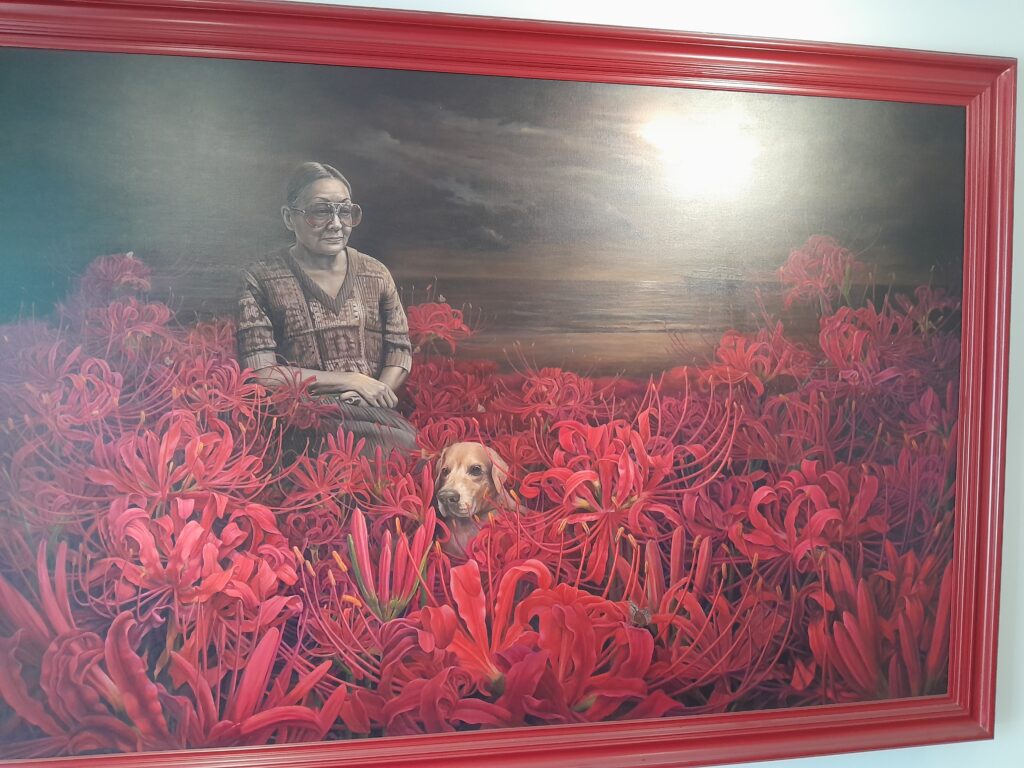
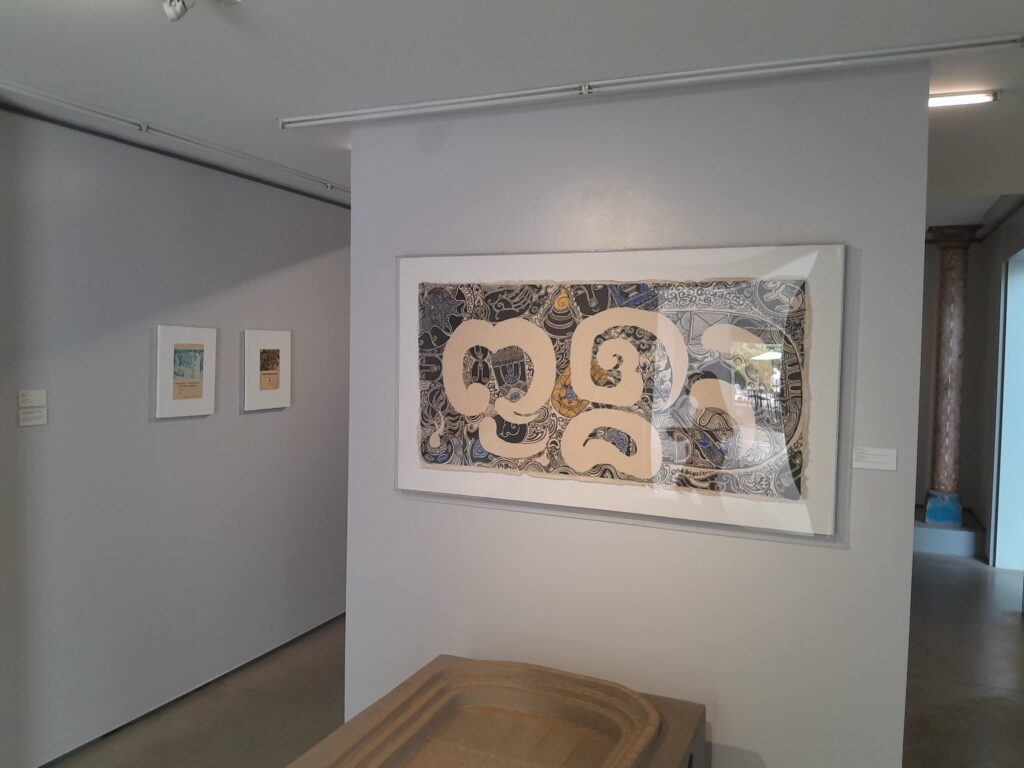
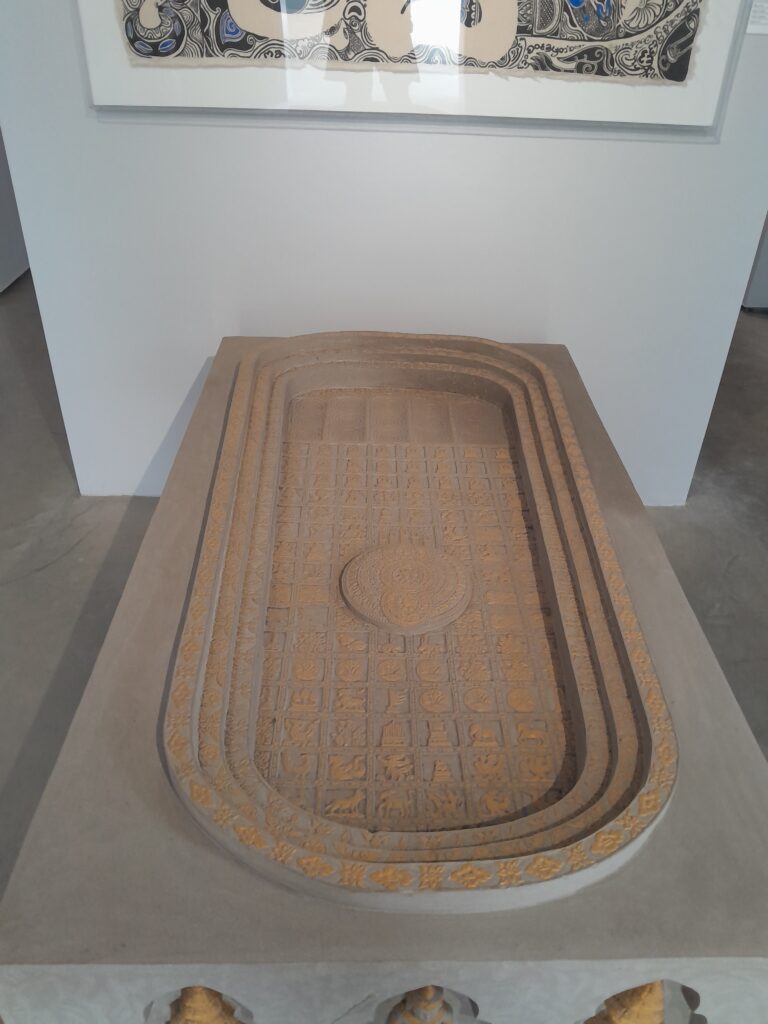
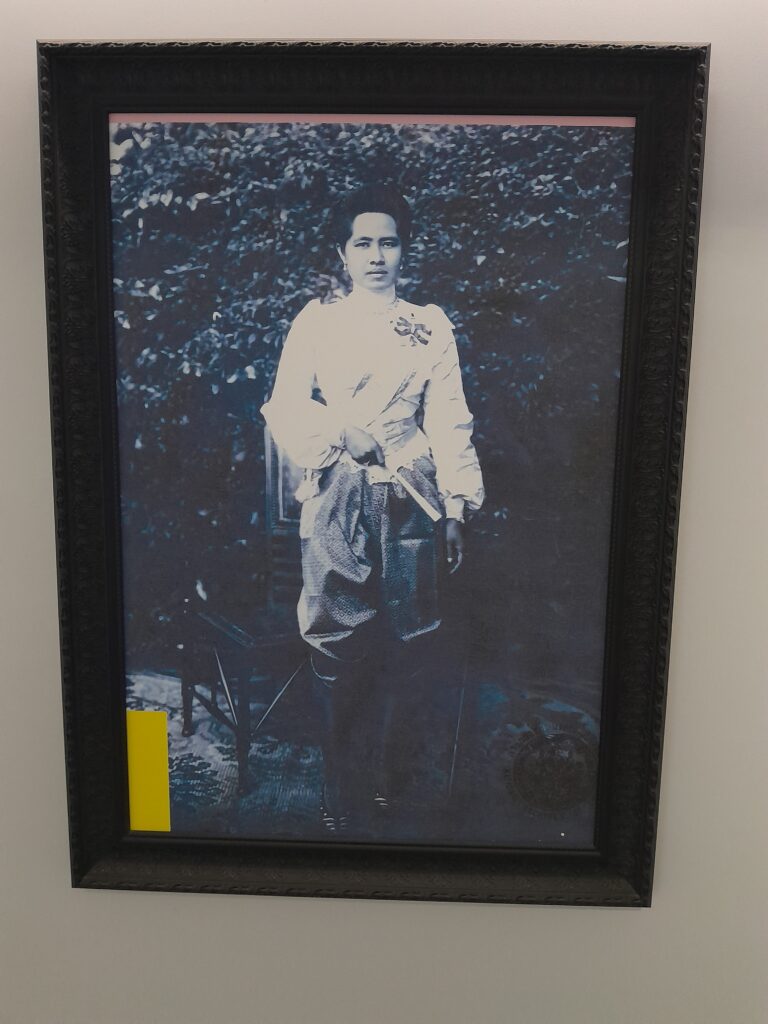
The first painting I noticed when I entered the museum was a memorial. A portrait by Navin of his Aunt Patsri, the co-founder of MAIIAM, who passed away before she could see his new gallery. The portrait displays her sitting among “Higanbana”, striking red flowers that are a symbol of someone passing away in Japan. Though the painting is colourful, Patsri is painted using only gray tones, which to me represented her fading away from this world.
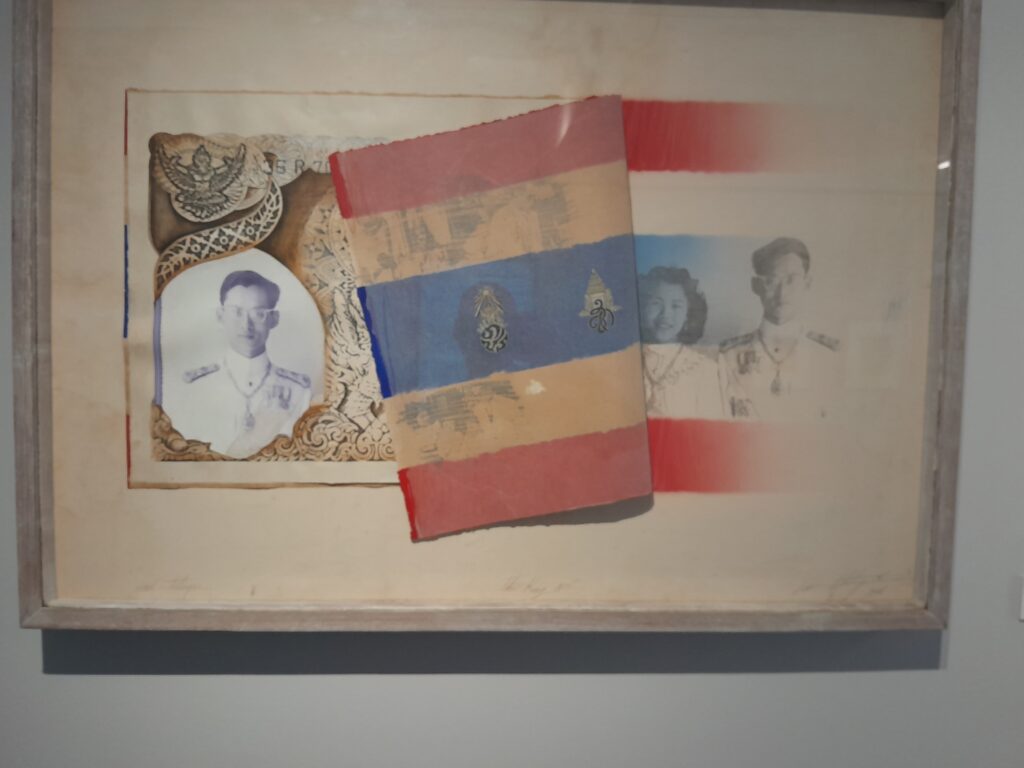
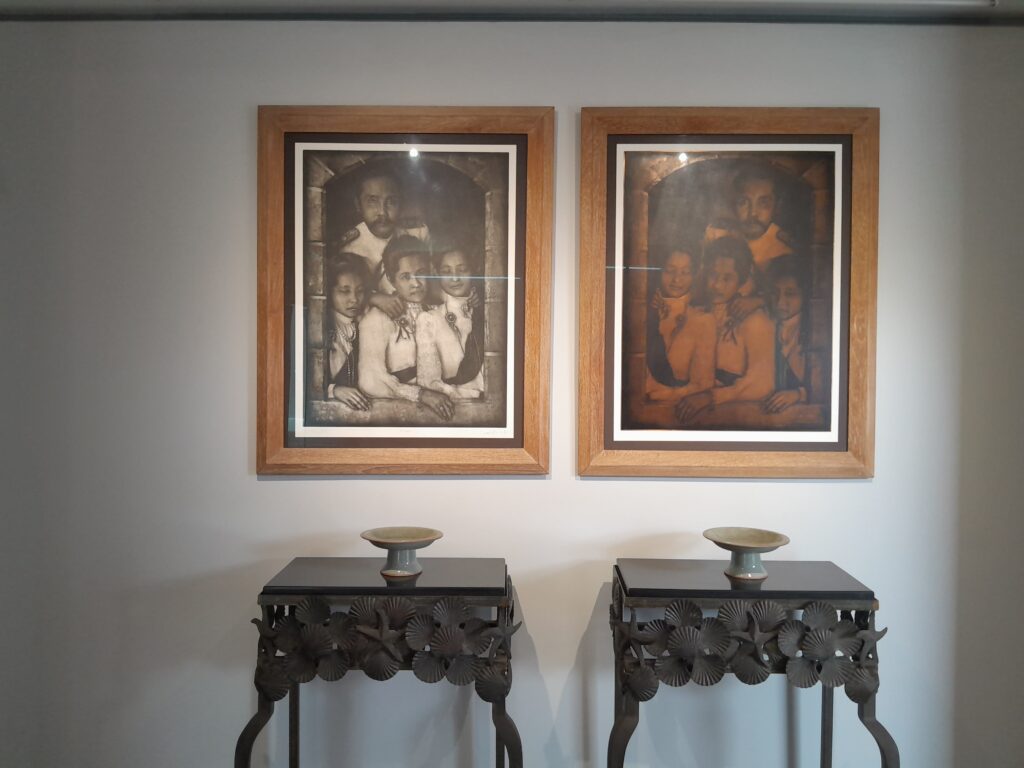
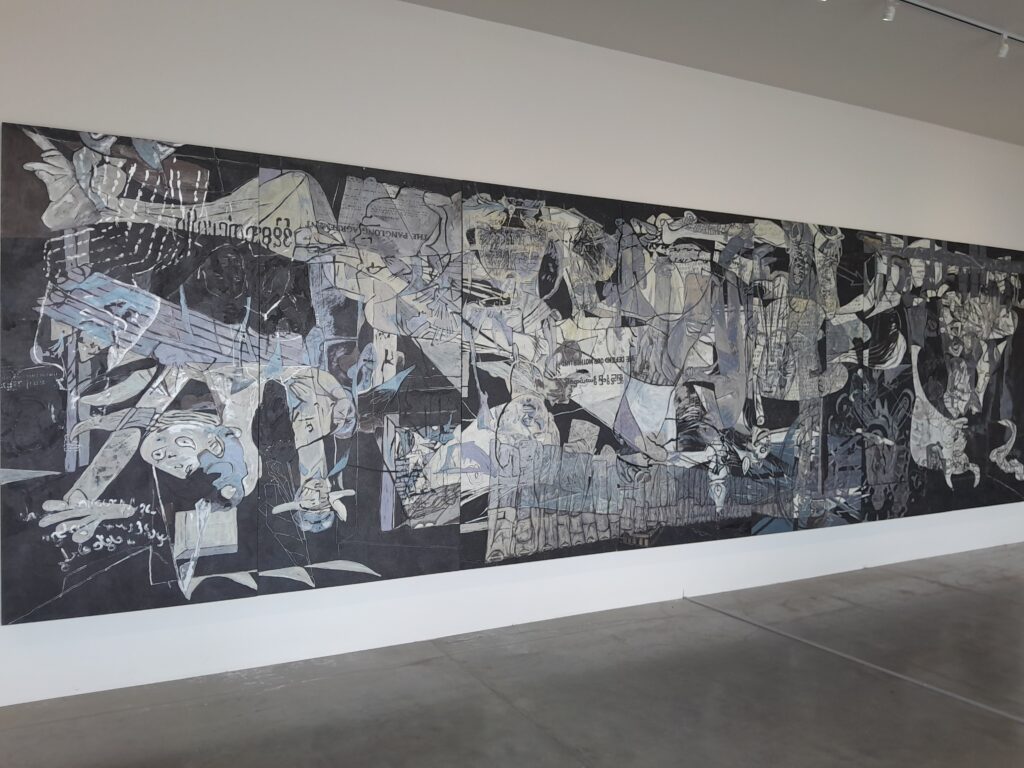
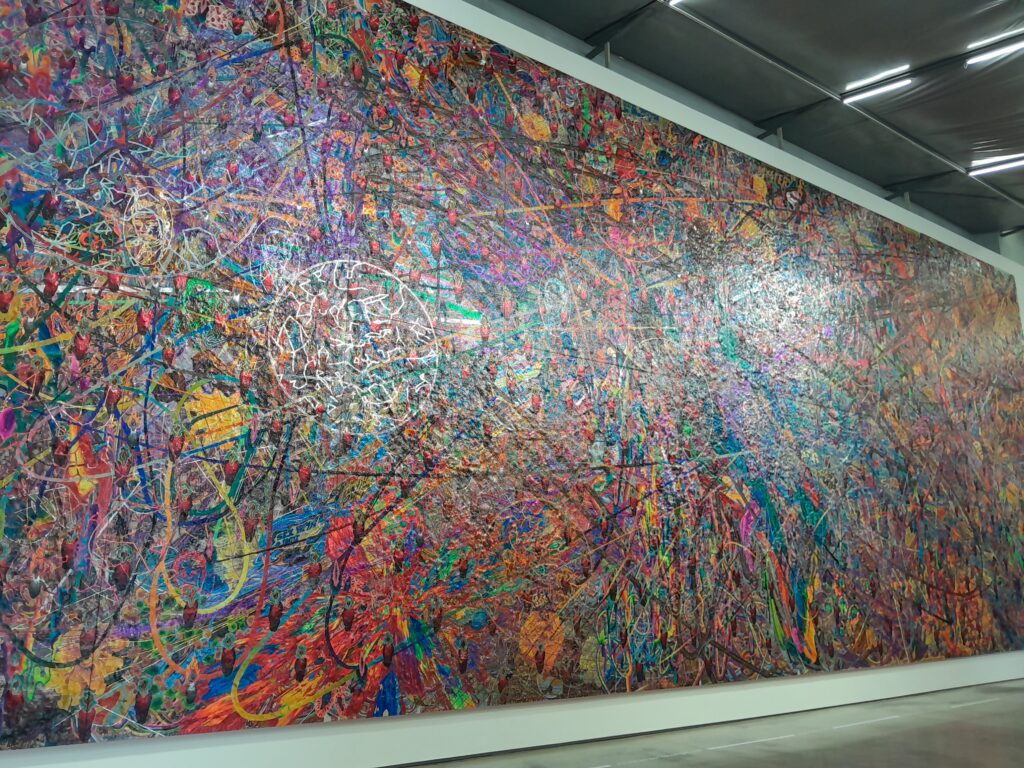
It was a striking introduction to a well curated art museum that exemplifies the founders’ love of art. The first exhibit was a bit of a mix with no set theme, except as an introduction to Thailand’s art-history. It included paintings, a carving of the Buddha’s footprint, and early examples of Thai photography.
Culture
Moving into the main hall we see some large murals in a more modern style, fitting the name of the museum. These murals are huge representations of Thailand’s history, and you could stare at these for hours picking up details. I found myself looking up the country’s recent history on my phone to better understand the work.
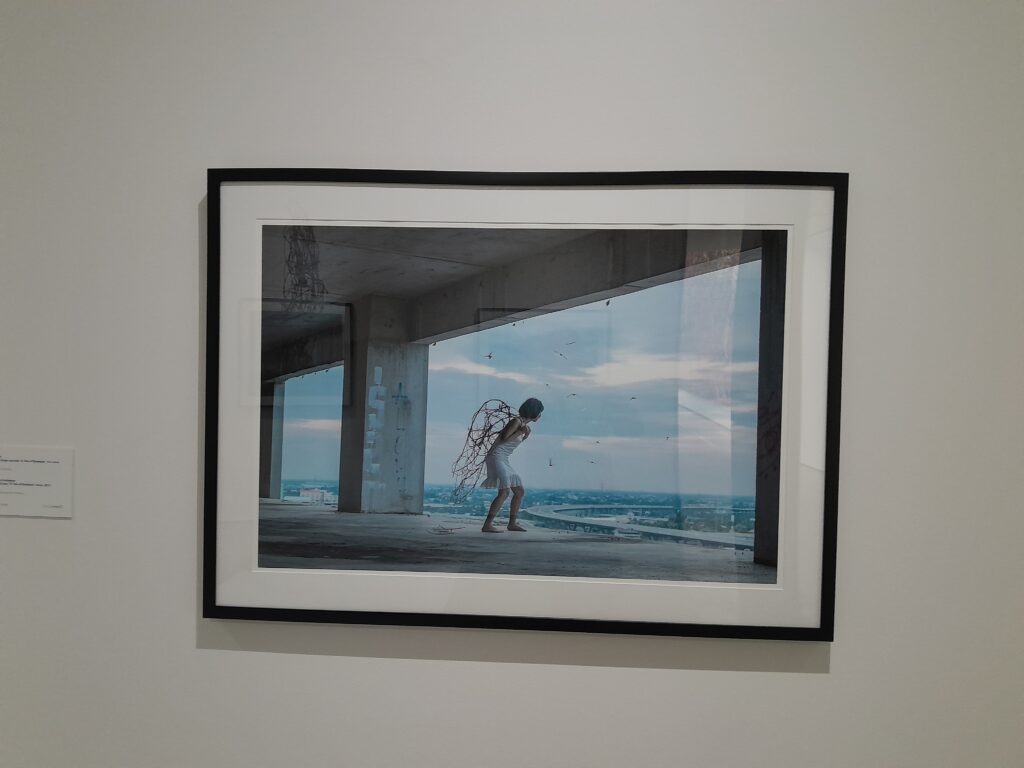
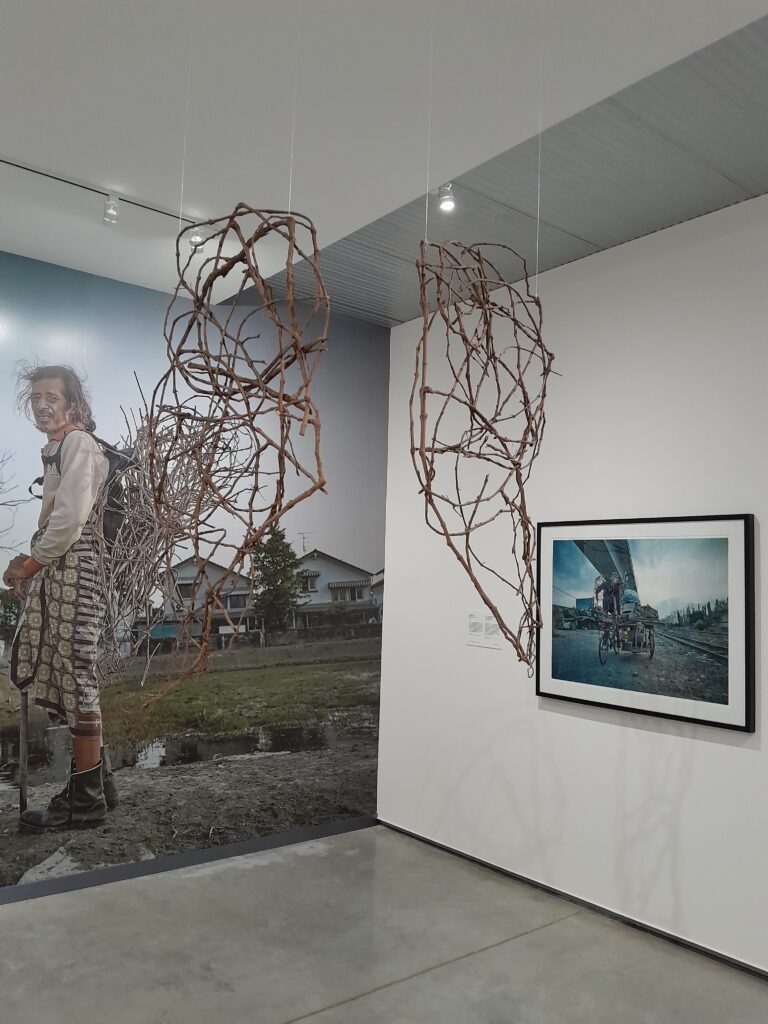
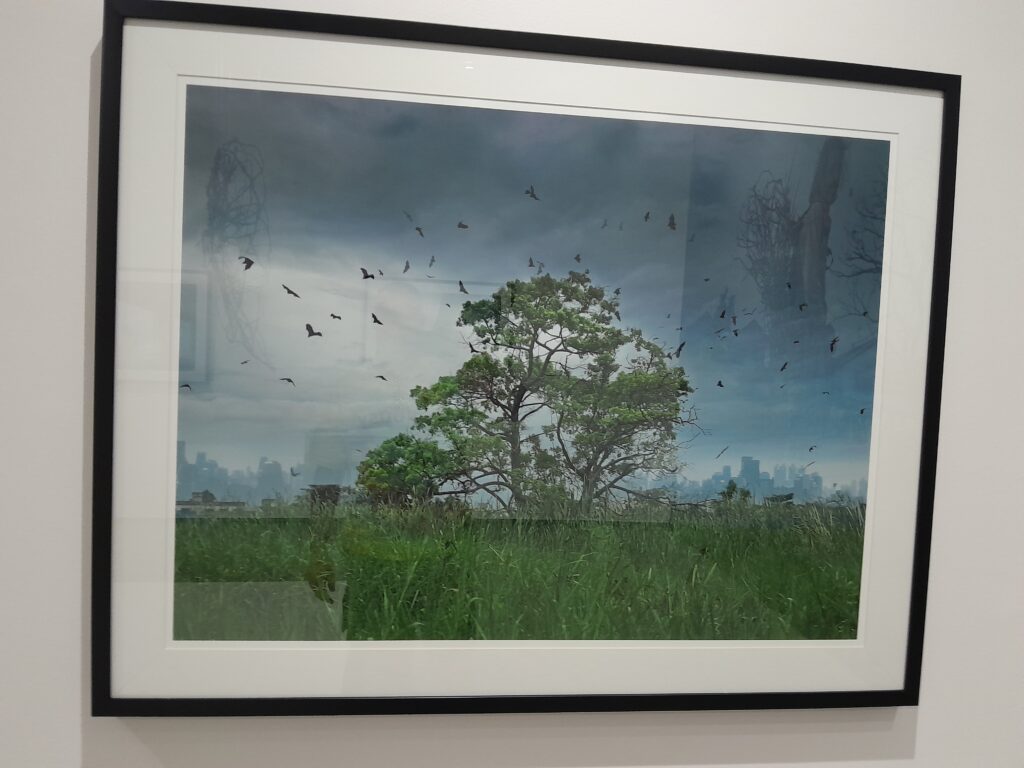
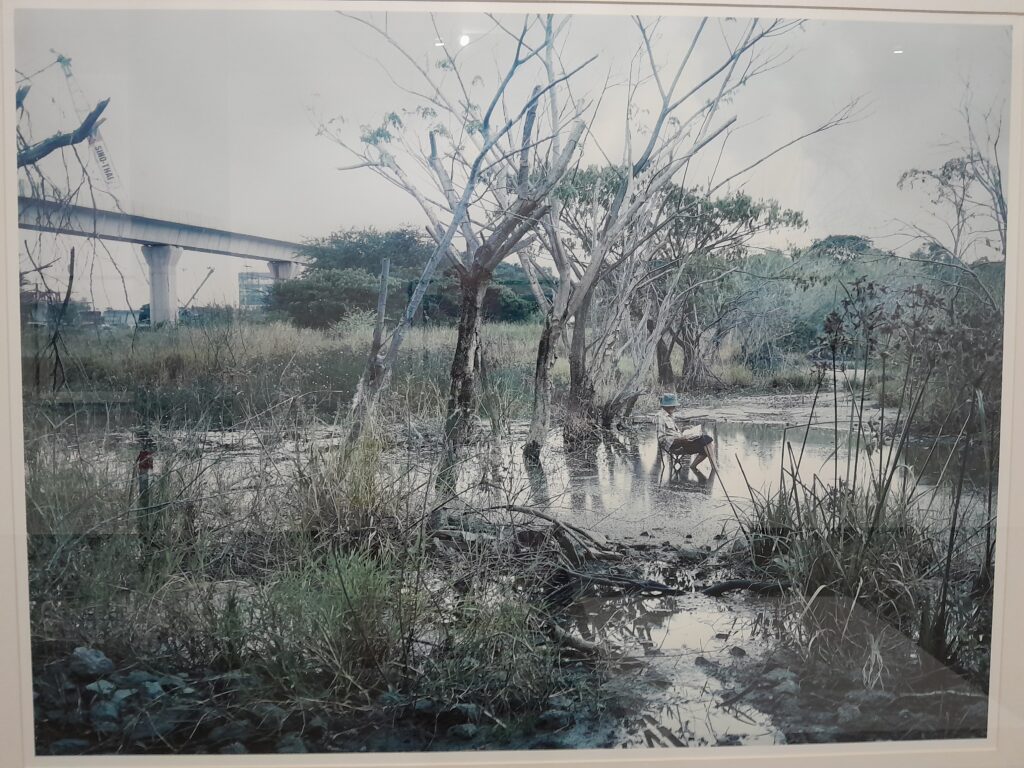
To one side is an exhibit of Dansoung Sungvornveshapan, a Thai photographer. He takes pictures of people on the fringes of Thai society, who are often left behind due to inequality and exploitation of natural resources. He gives his subjects wings made of sticks and twigs to represent how they are stick in “fight-or-flight” mode. But the wings are hollow, leaving them unable to move, with no other choice than to fight.
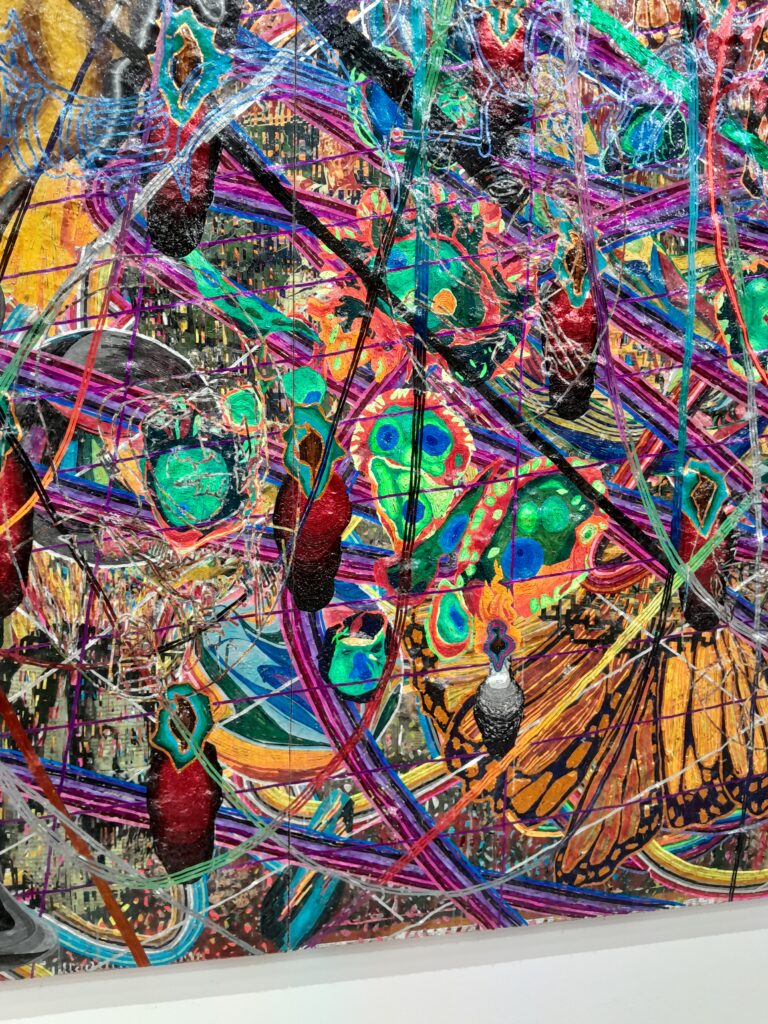
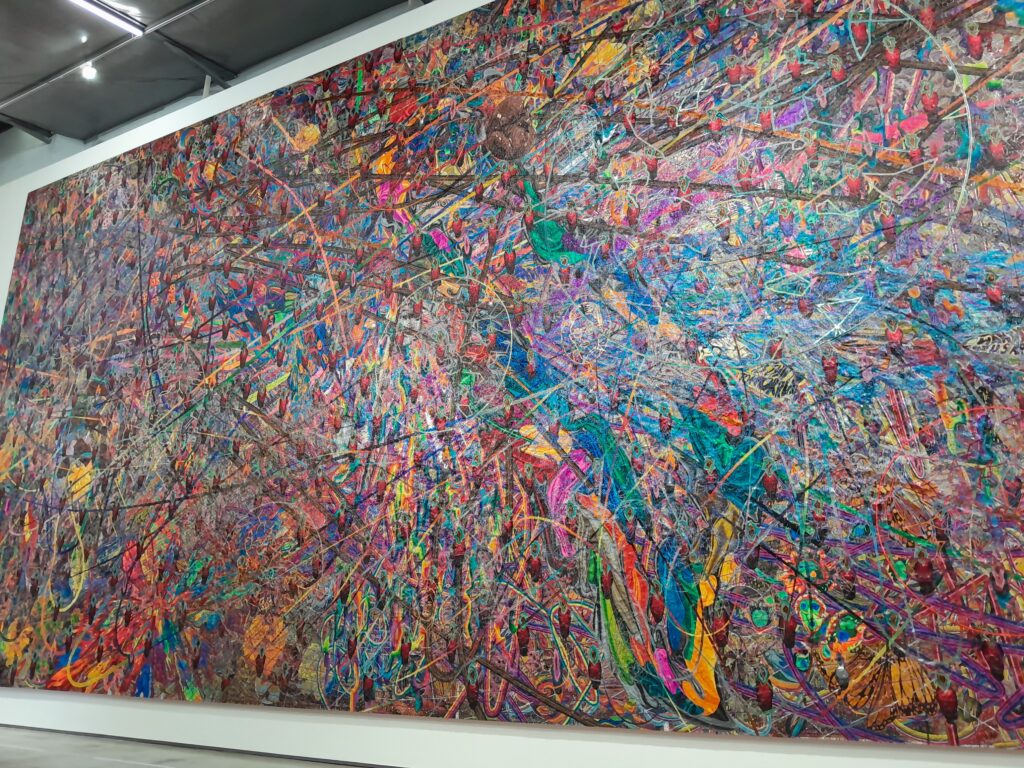
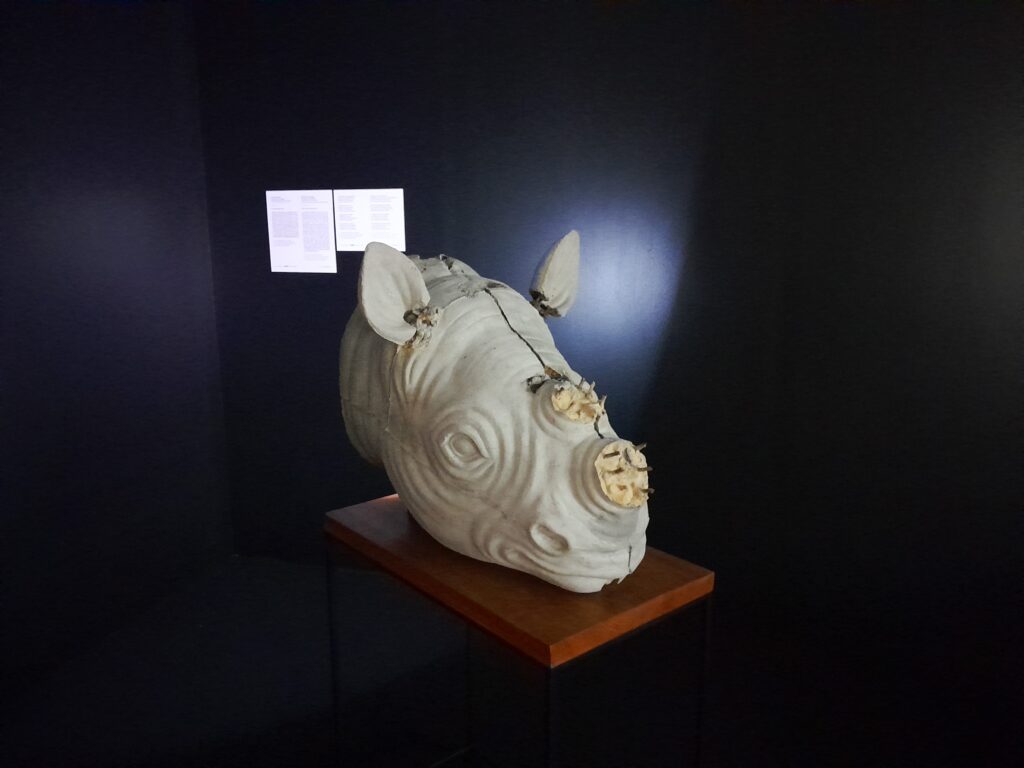
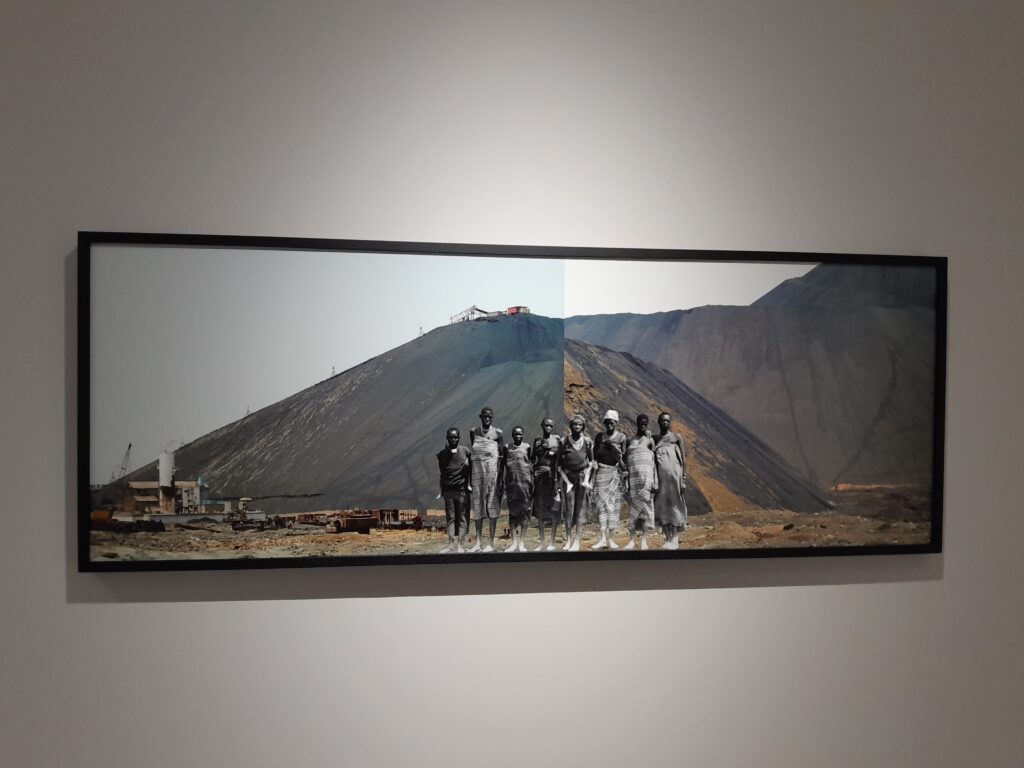
From one marginalised culture to another, the next exhibit had photographs of slaves from the Congo, juxtaposed onto the modern day places where they used to work. Naked and in chains, these images were a stark reminder of the exploitation that Belgian colonisers put them through.
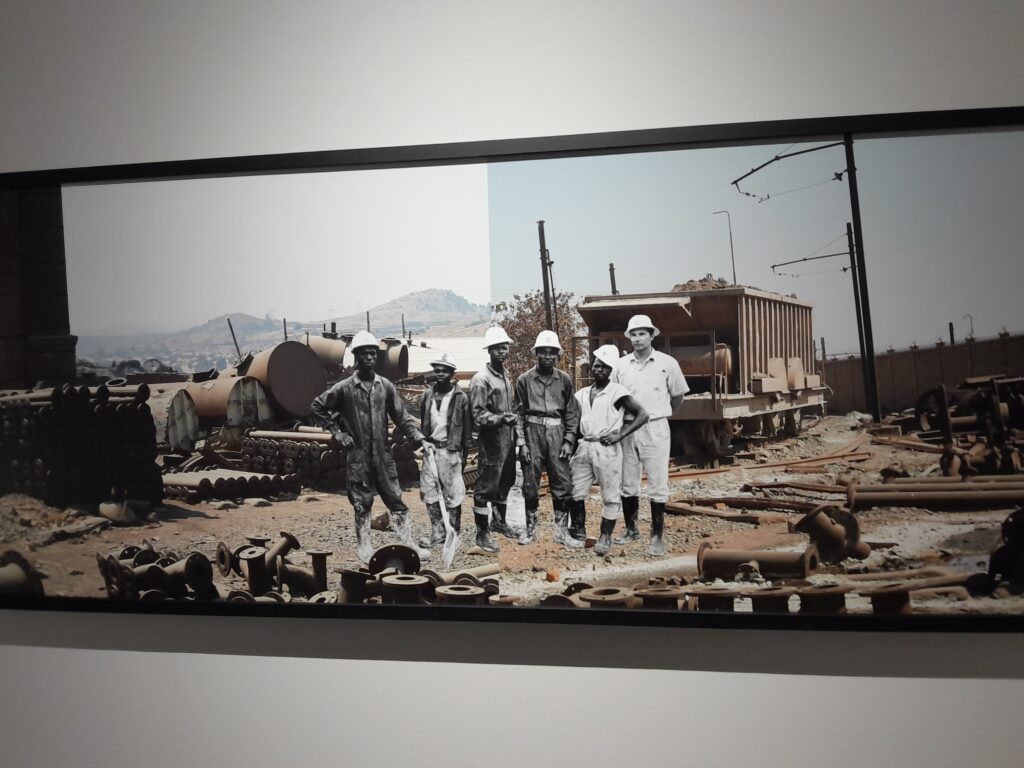
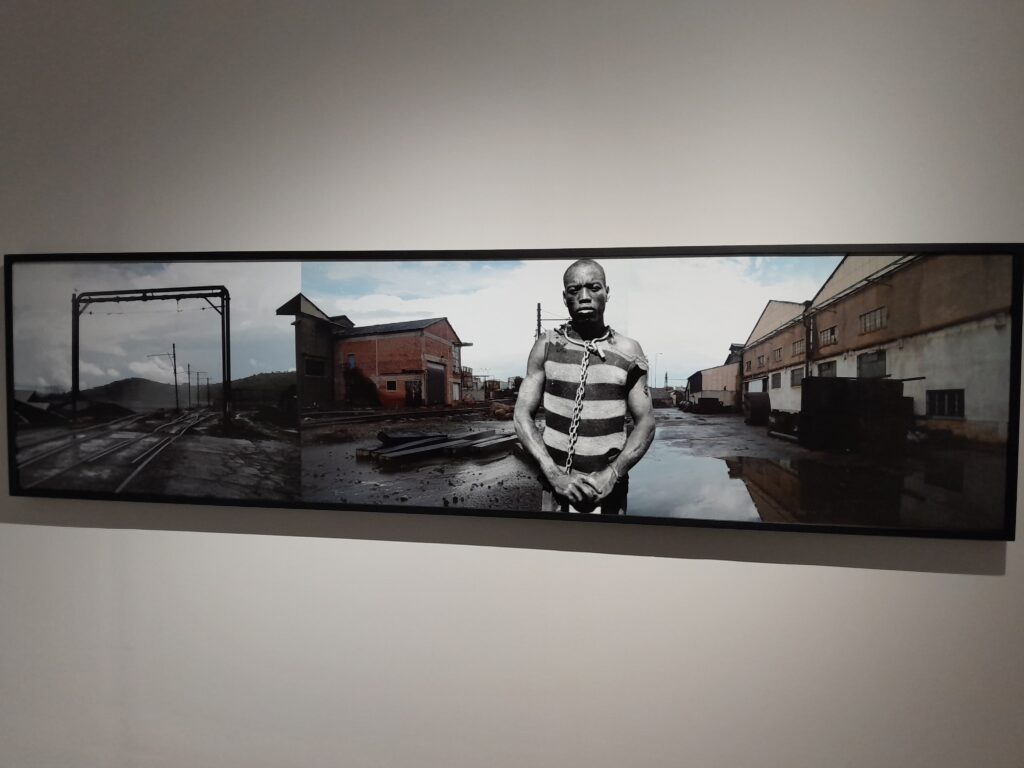
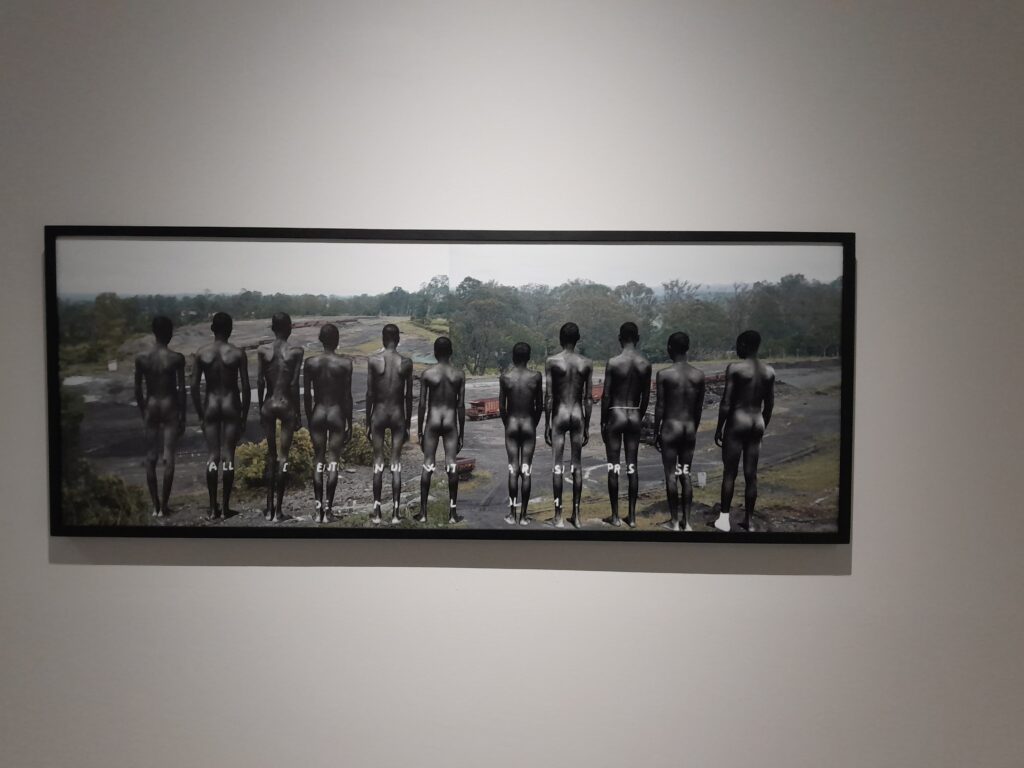
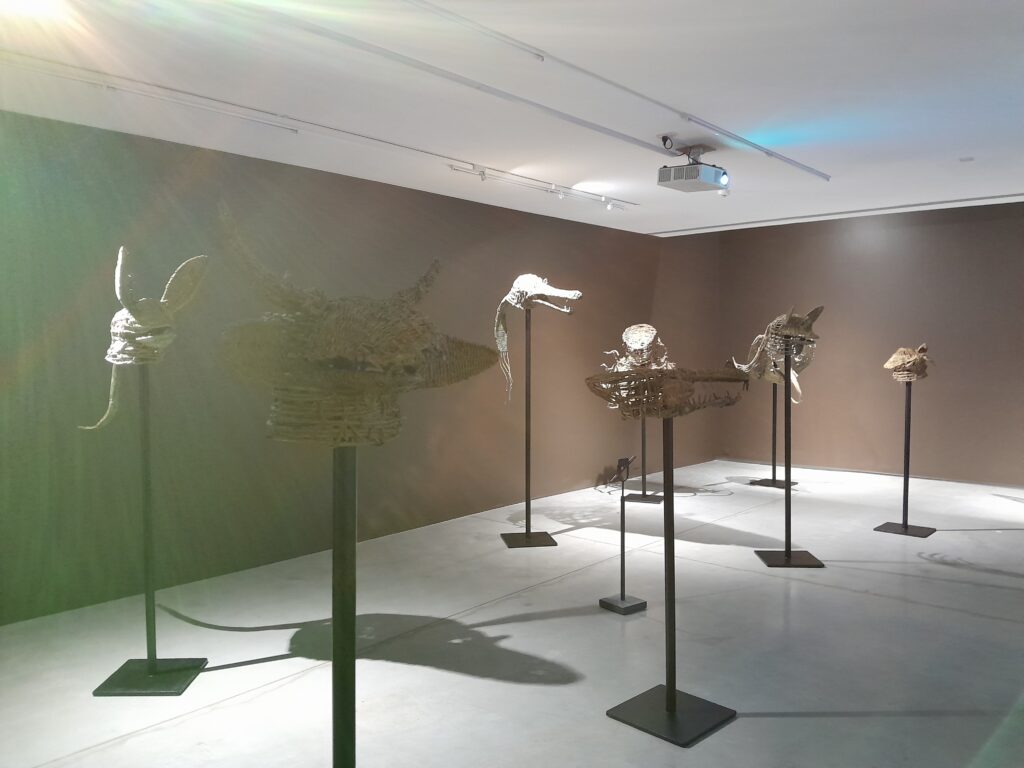
I moved into a hall filled with reconstructions of the traditional animal masks of Cambodian tribes. These masks would be used in rituals, believed to represent the ancestors of the people. They were usually made from raw vines native to the area, a material also used to create fishing nets. This culture may not be on the fringes, but it is a culture that may disappear one day. Here, the masks are given a permanent record in metal, creating an archive of the tribes that will last for generations.
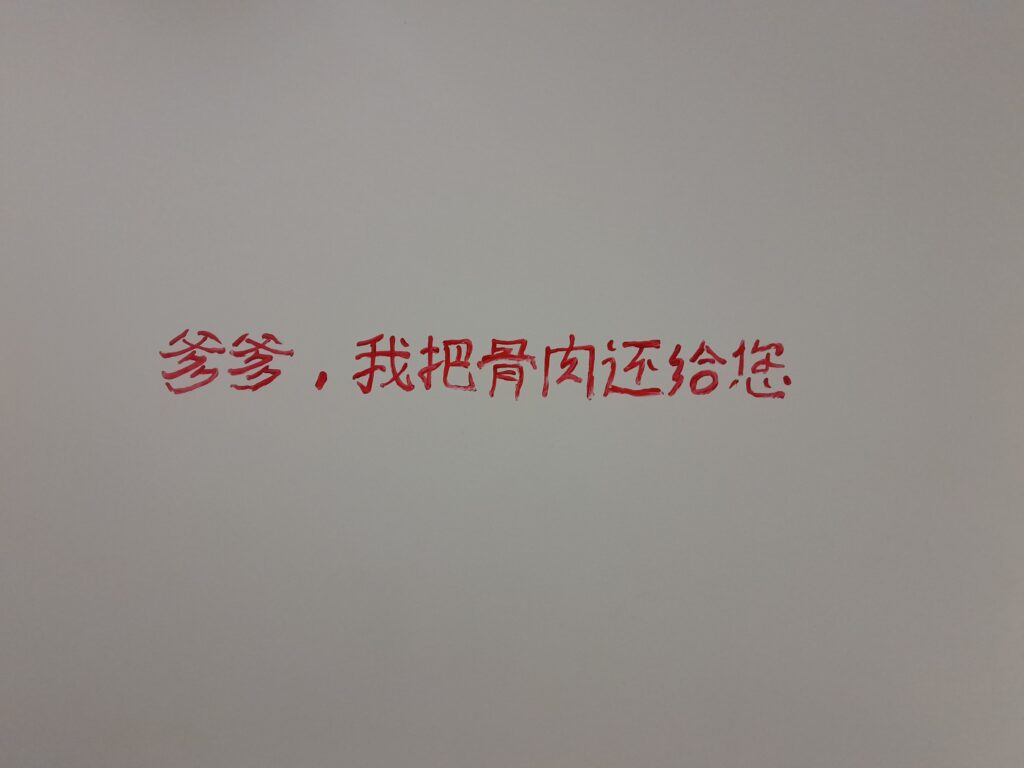
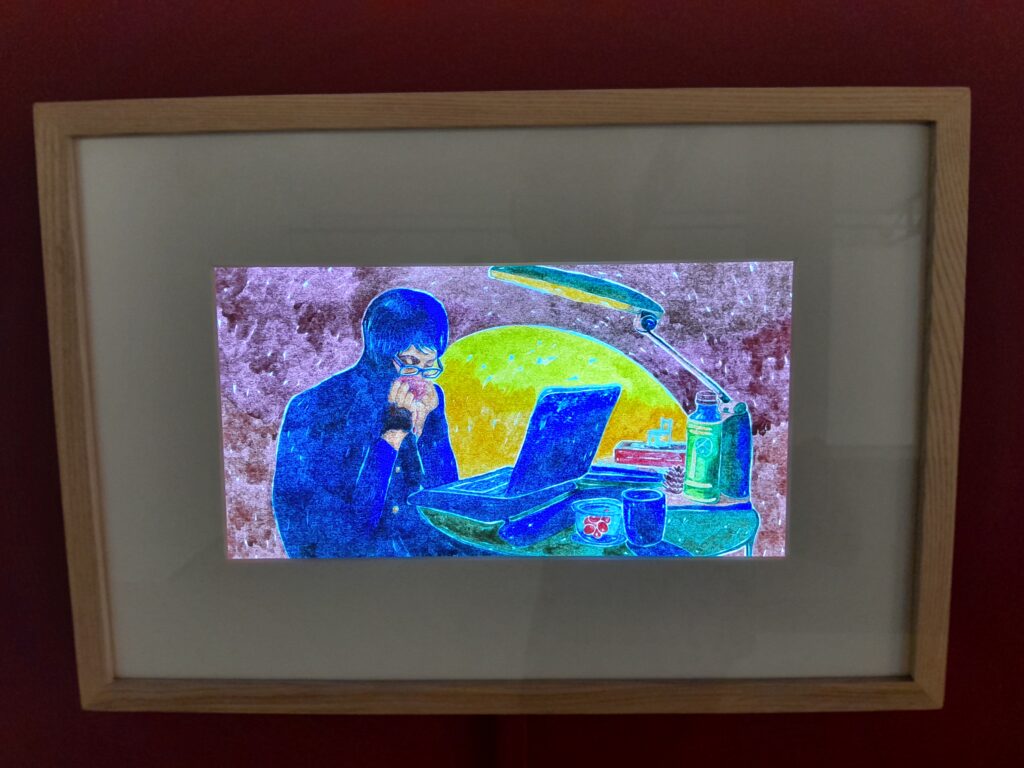
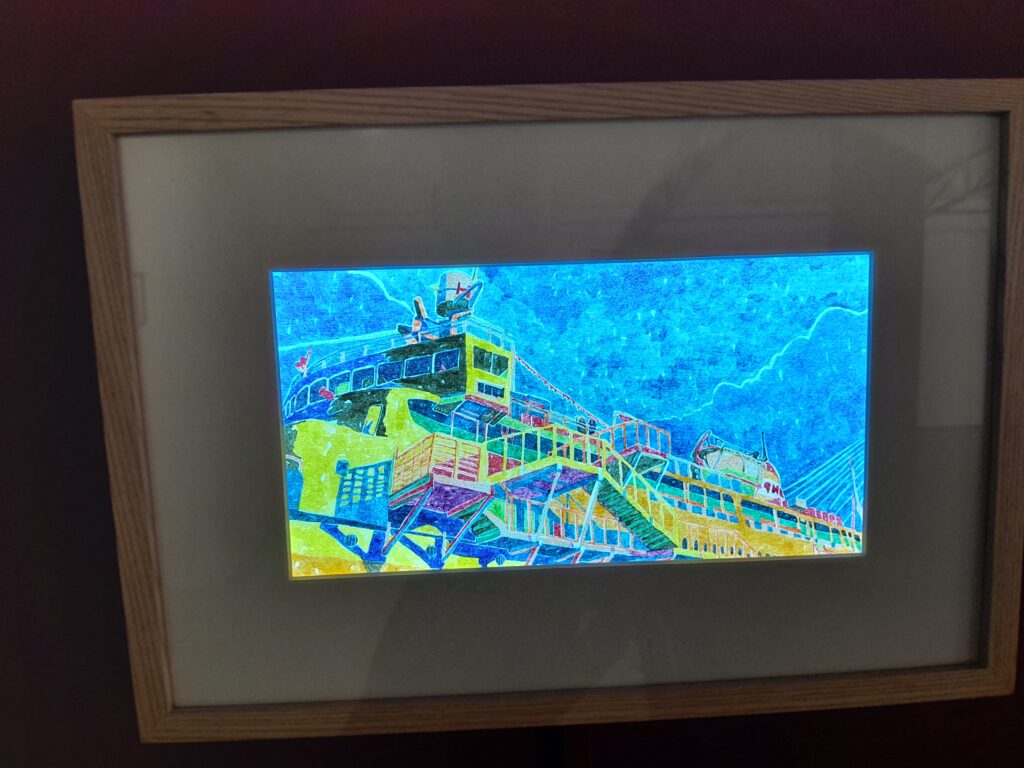
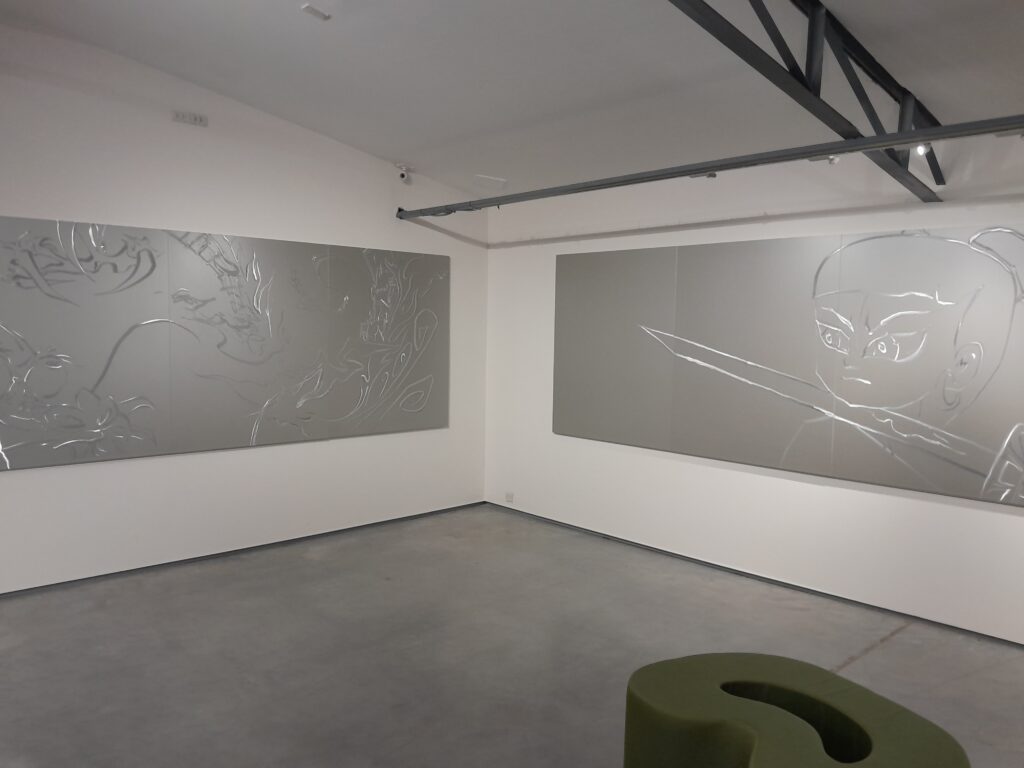
A group of “paintings” by Ian Tee, a Singaporean artist, marked a transition from indigenous cultures to modern day art culture. Not actual paintings in the traditional sense, these were created by using an angle grinder on aluminium sheeting. They create sharp, vibrant images, reminiscent of anime or traditional Chinese art. There are many contemporary artists in Asia exploring different materials and techniques, and this is one example of the current cultural movement.
Modern Art
The exhibits shifted away from a focus on cultures to a focus on modern art, much of it abstract. While the works themselves were less of an exploration of culture, the museum itself was now an exploration of contemporary art culture in Asia.
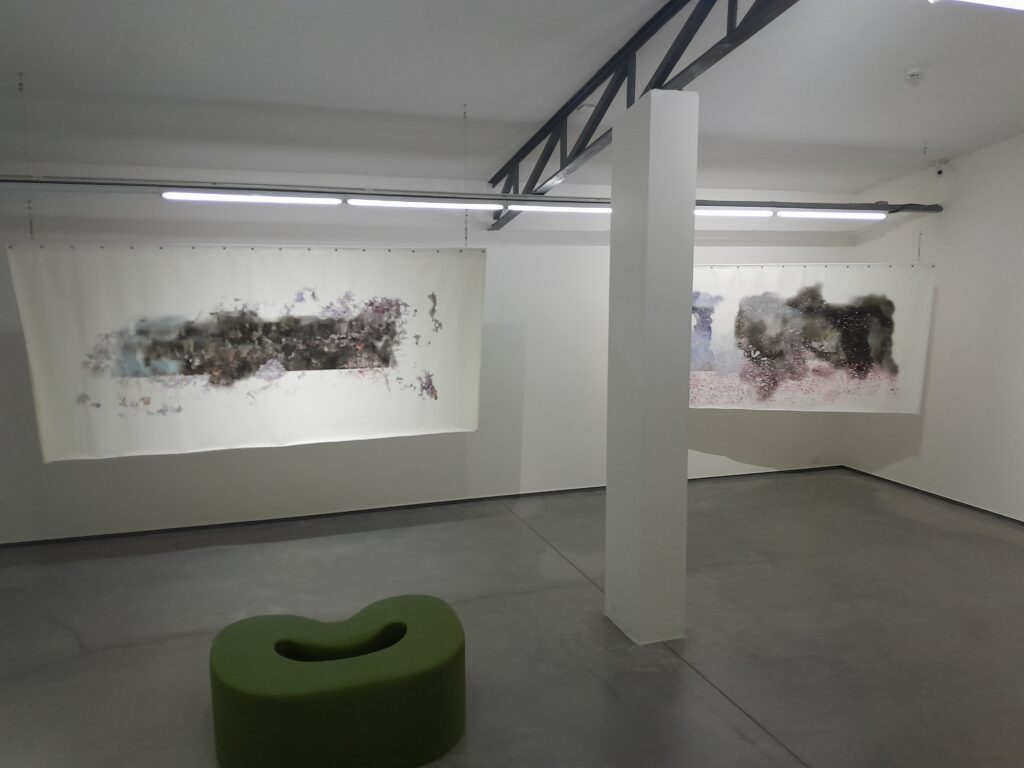
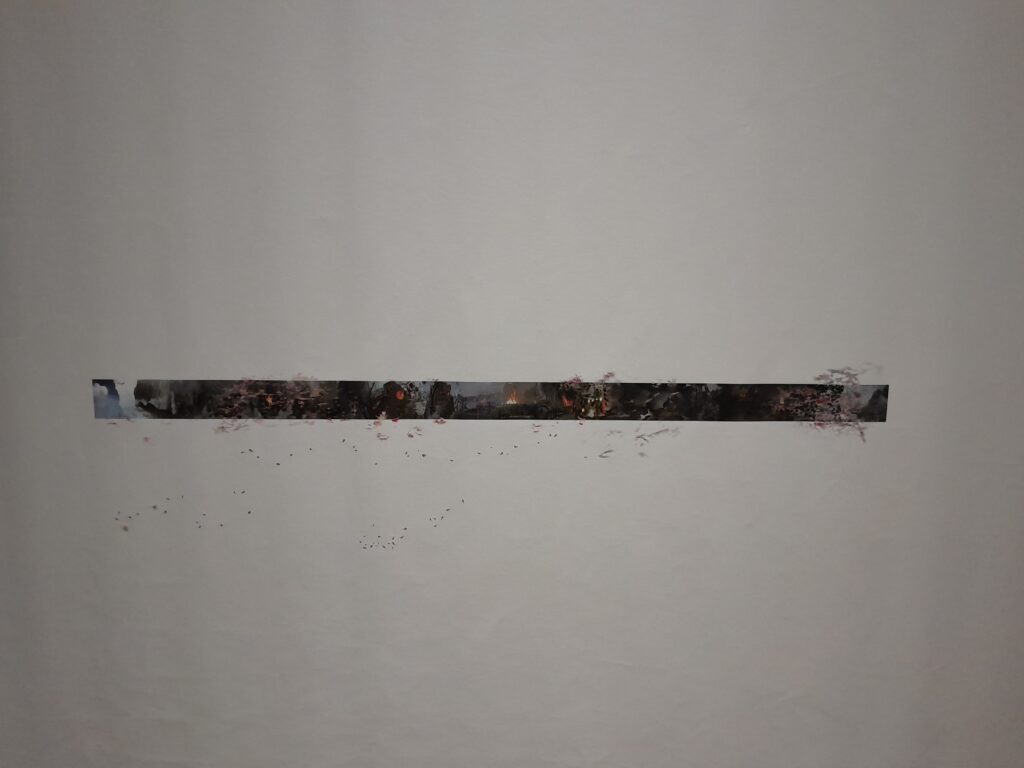
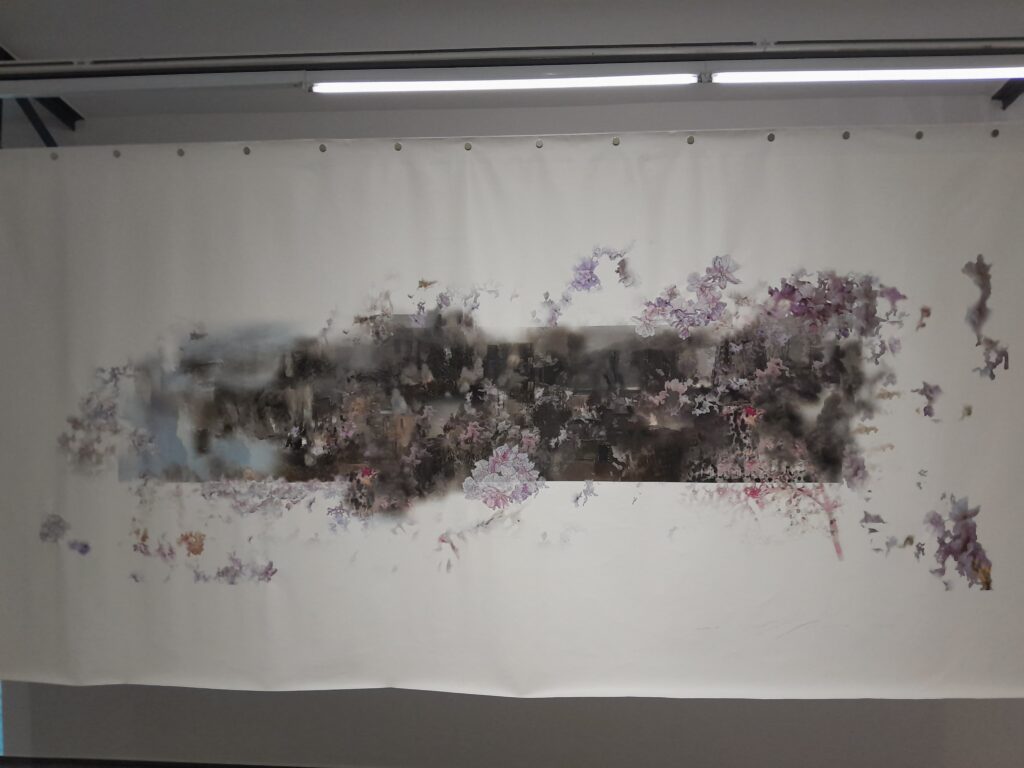
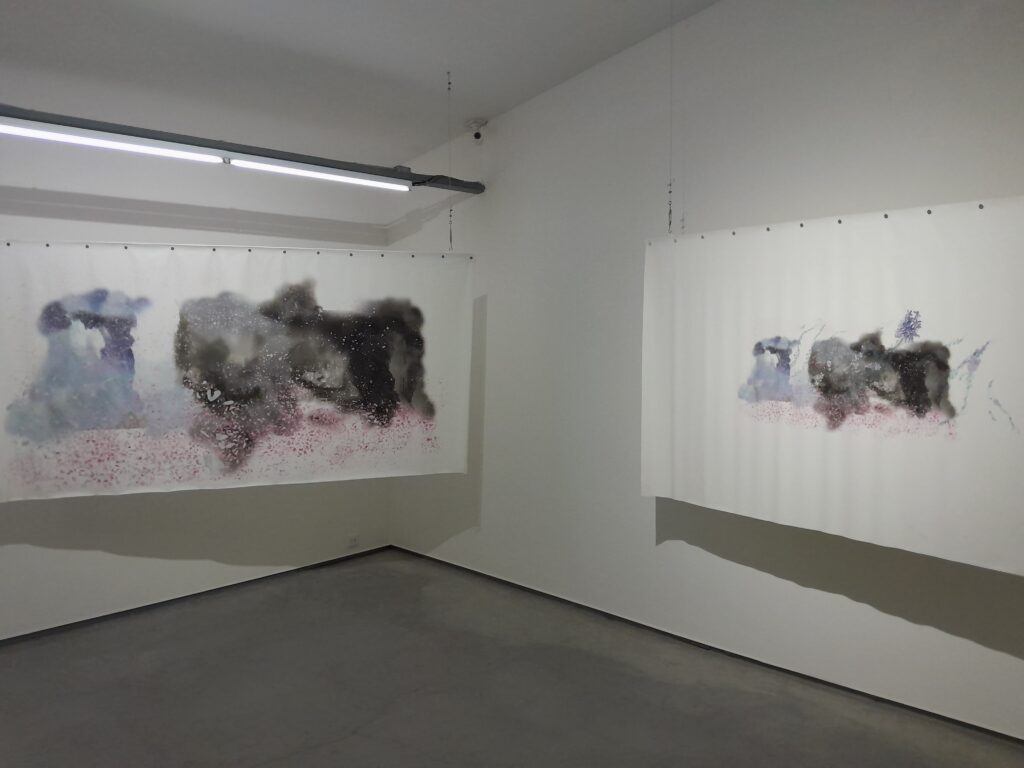
One exhibit was footage from CCTV cameras at the Arndale Shopping Center in Manchester, spliced together to form a loose narrative by following a few specific people around. I recognised it from the way it looked when I would visit it in the 2000s and ended up sitting and watching the footage for a while, allowing memories from that part of my life to flow back. It was comforting to see that Asia had as much interest in Western culture as was the other way around.
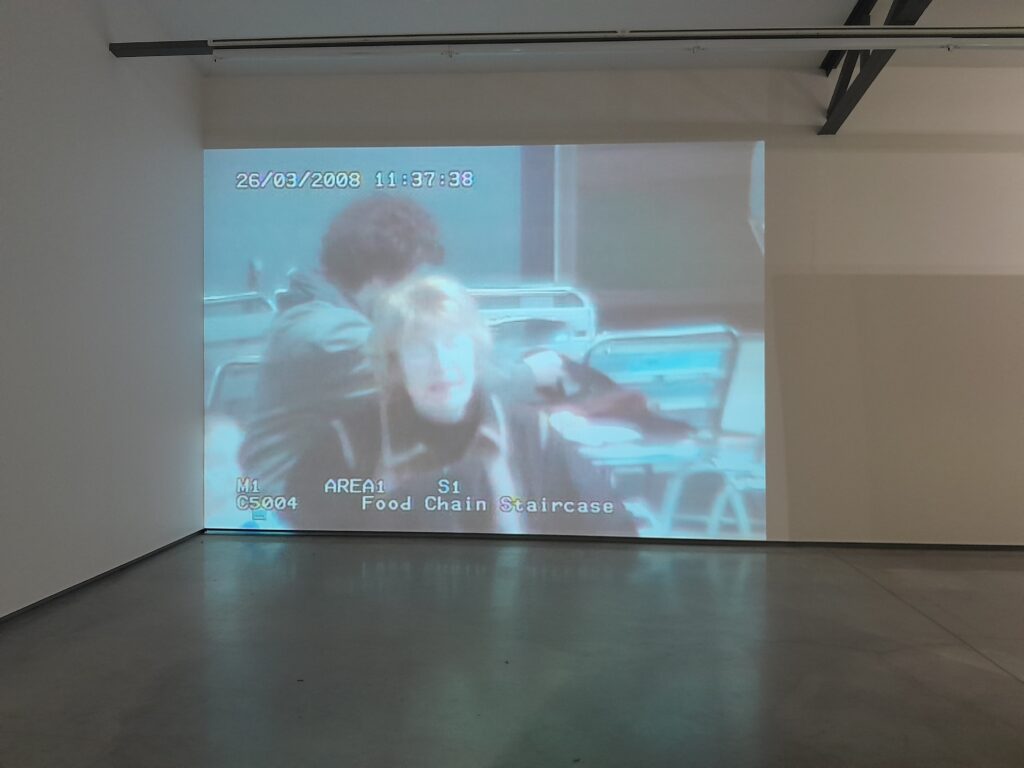

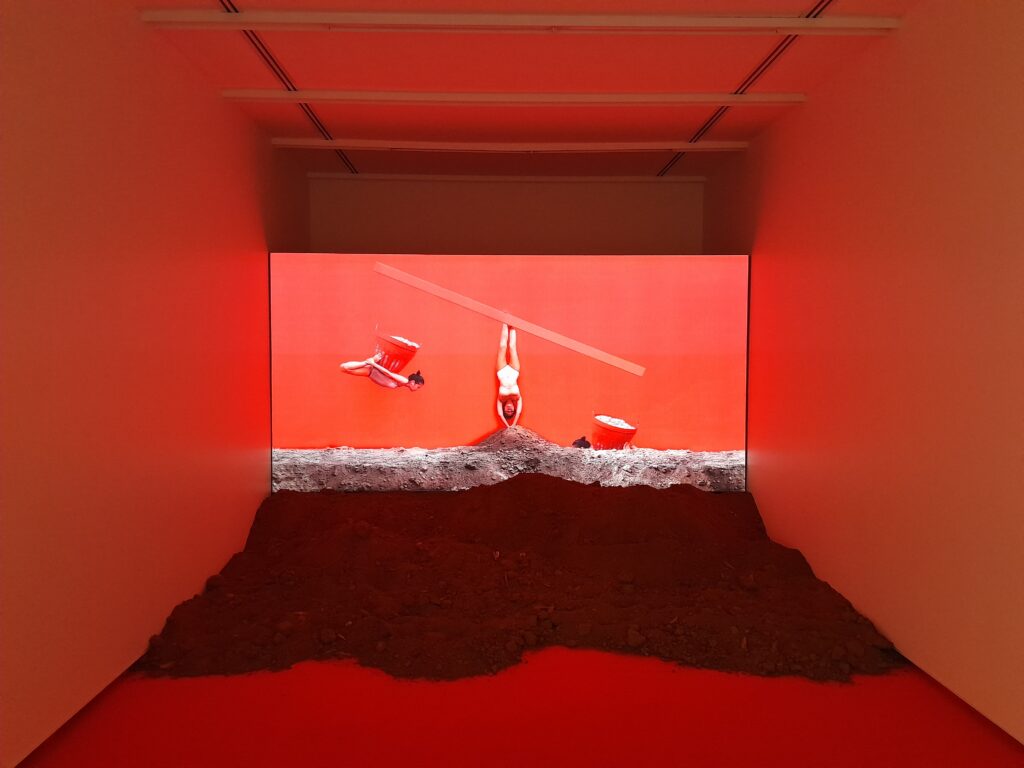
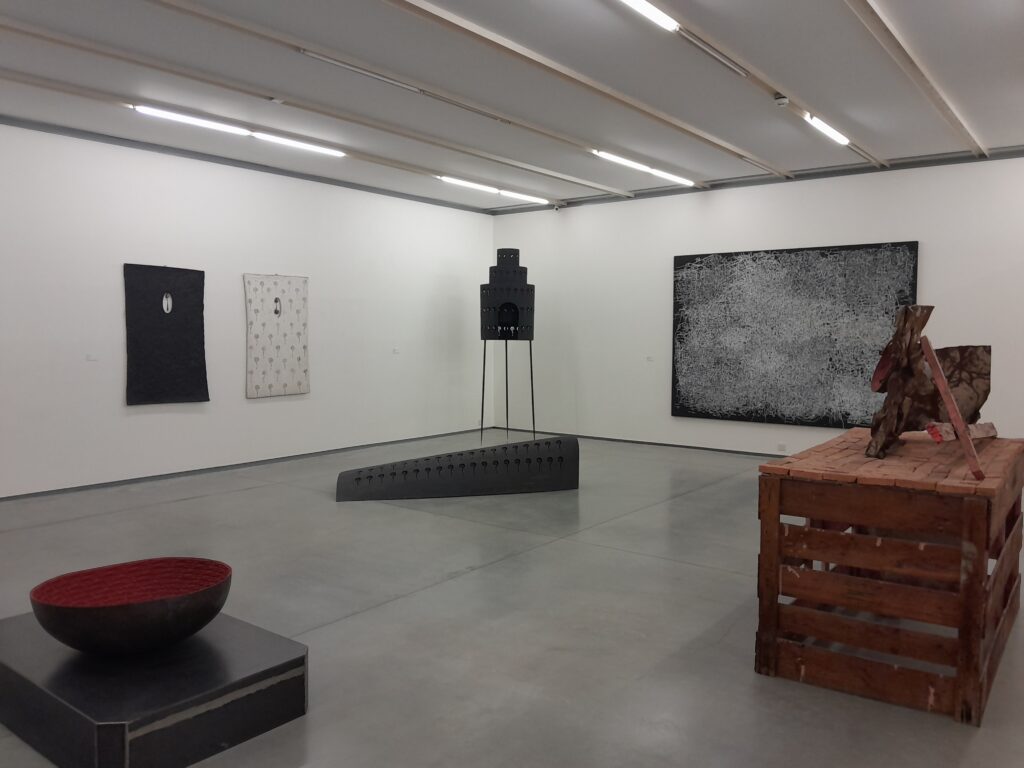
I entered what was probably the largest room in the museum. It was filled with many examples of abstract and modern art. One that stood out to me was a small bell hanging inside a black canvas. I’m not sure what it was meant to represent, but the contrast between black and white, detailed and a simple black block was striking to me. It made me think of yoni, a symbol in Hinduism that represents feminine power, creating an unexpectedly spiritual moment in the abstract gallery.
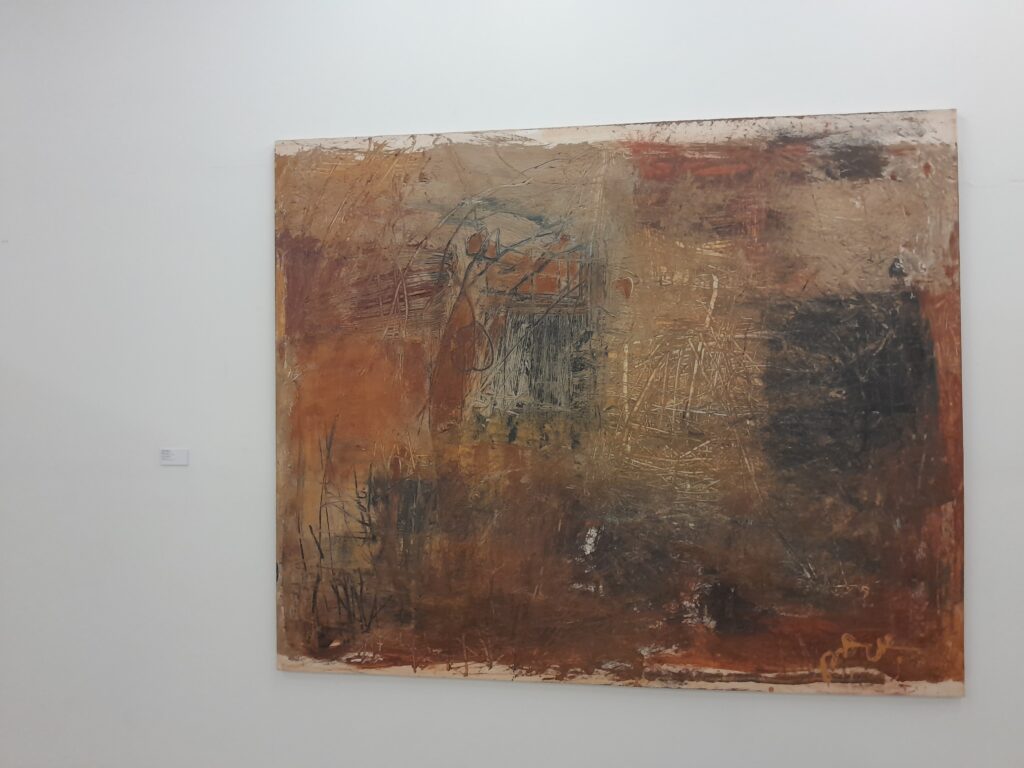
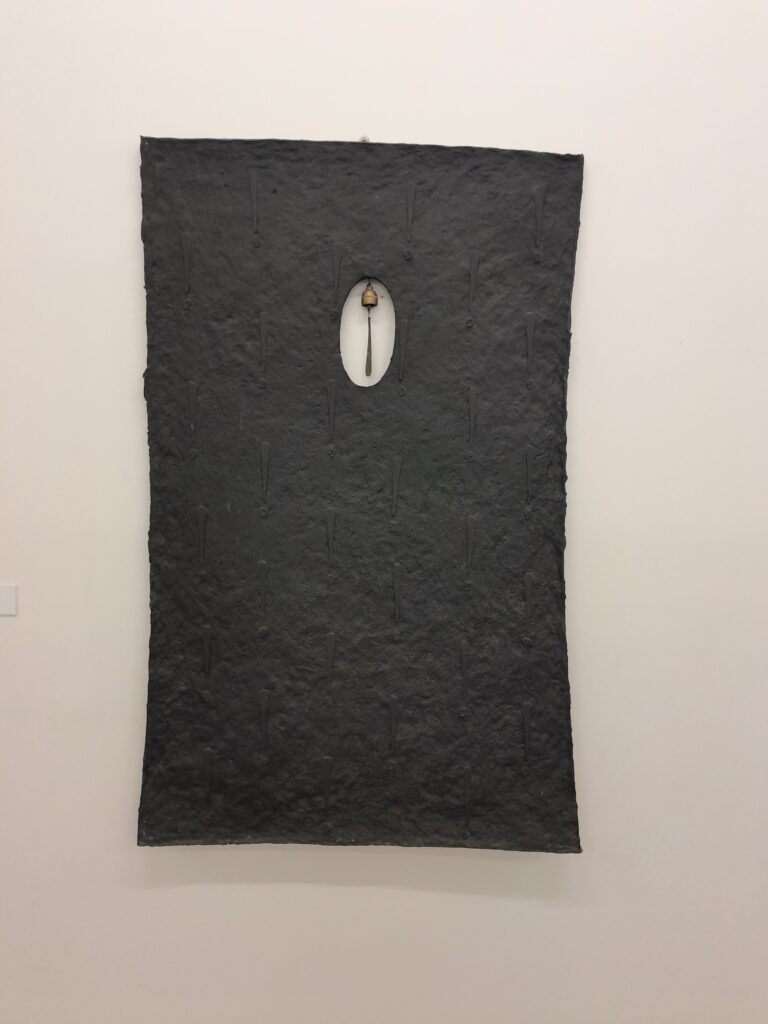
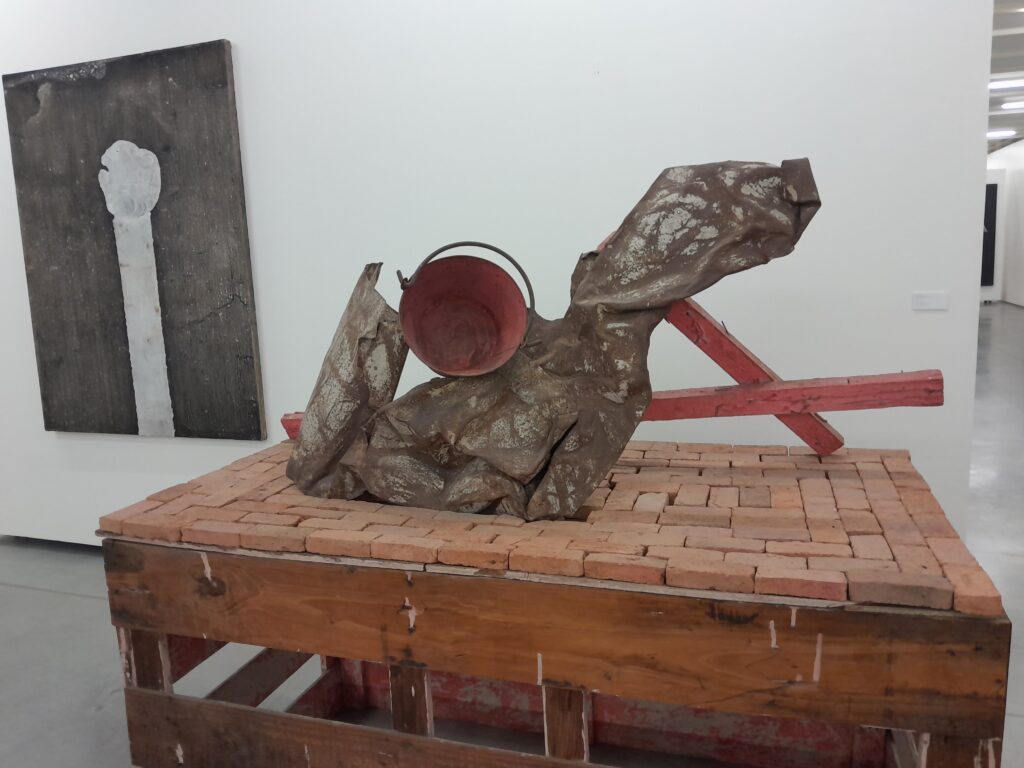
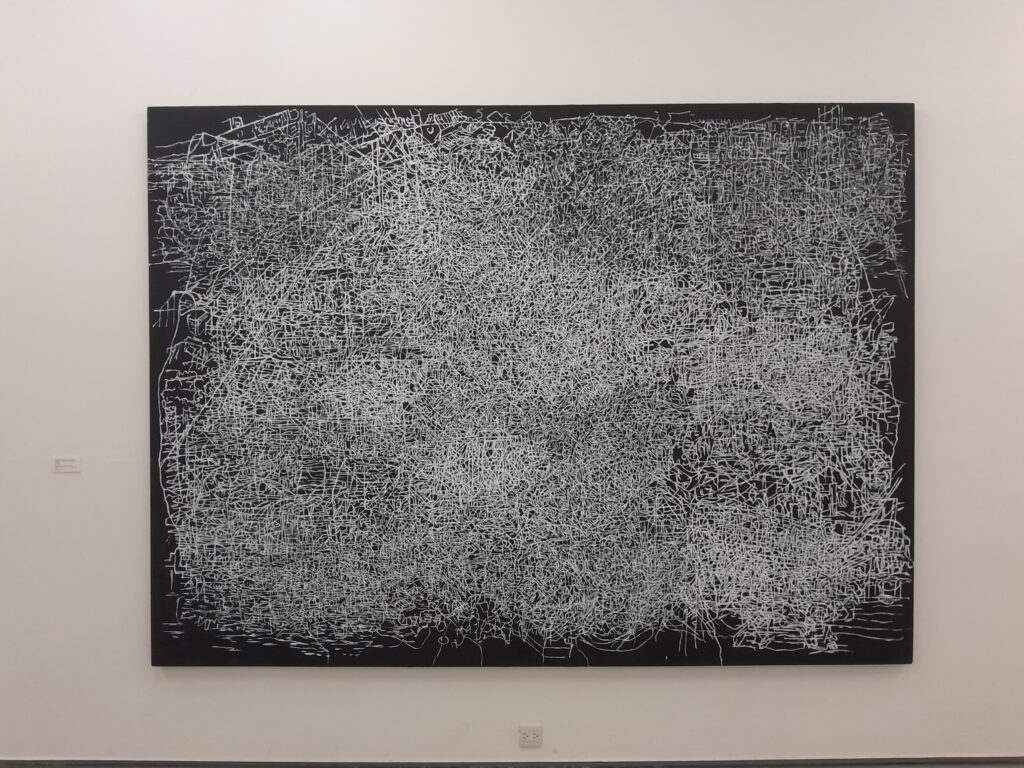
I liked a painting that was essentially a mass of white lines etched into a black background. The lines seemed to stretch out into several polygons within each other, almost like a chaotic spider web. I had an obsession with maps when I was younger, and this piece made me think of some old unlabeled street maps of London I had once come across. I would stare at this one, imagining a city hidden within the black and white paint.
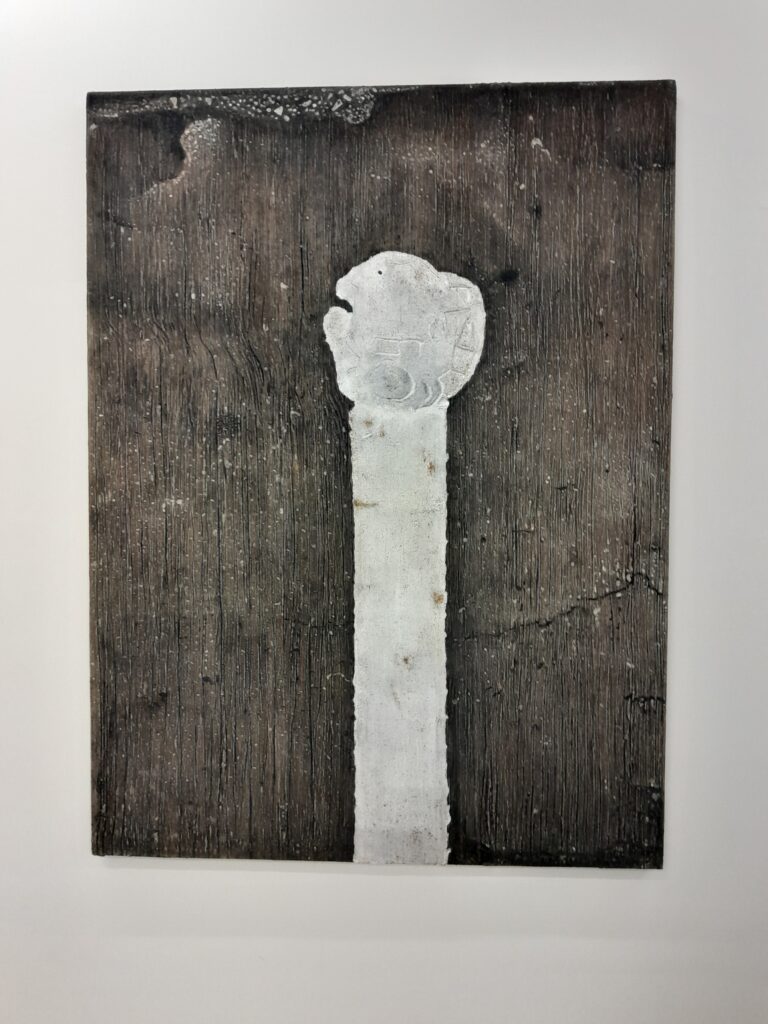
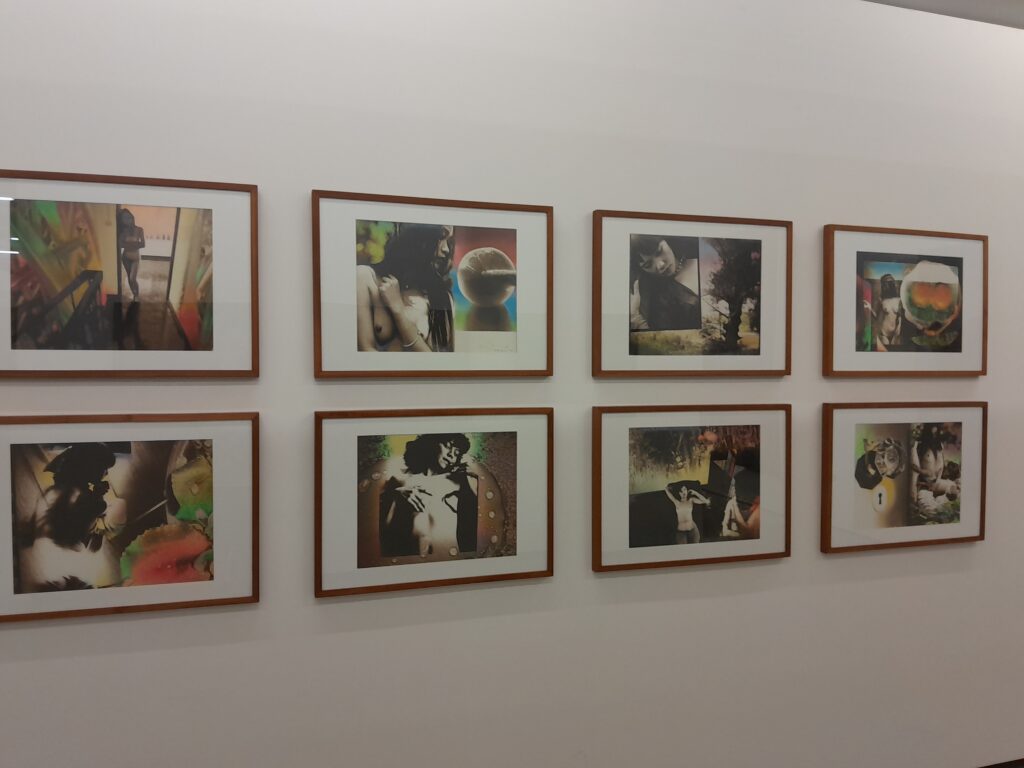
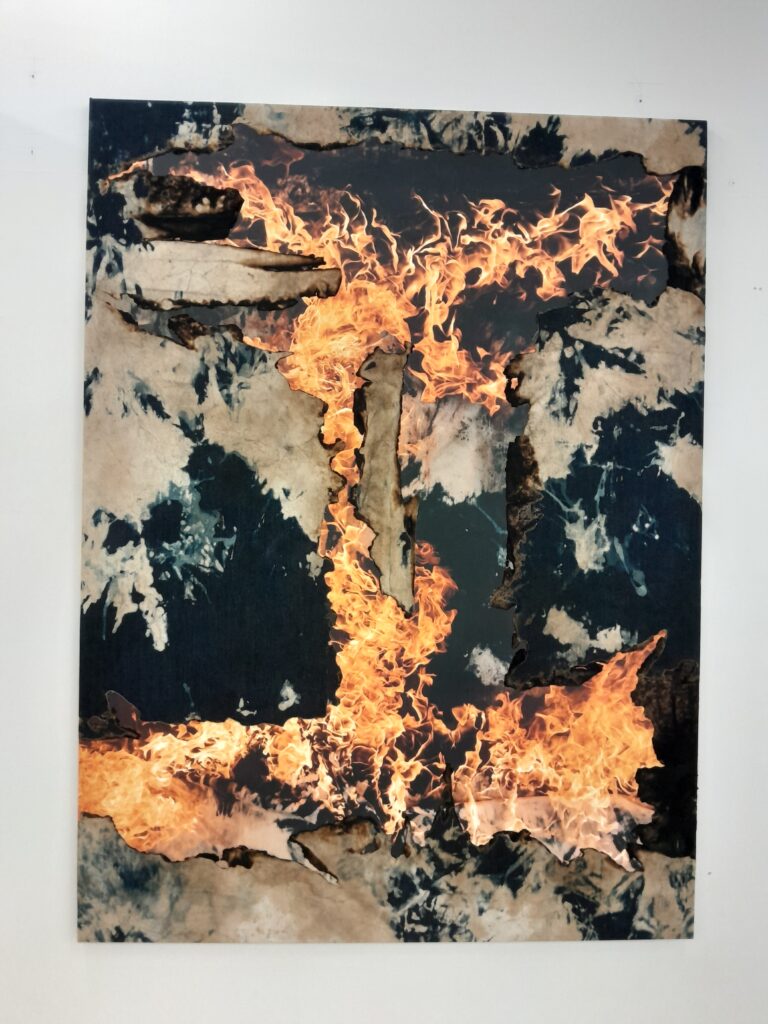
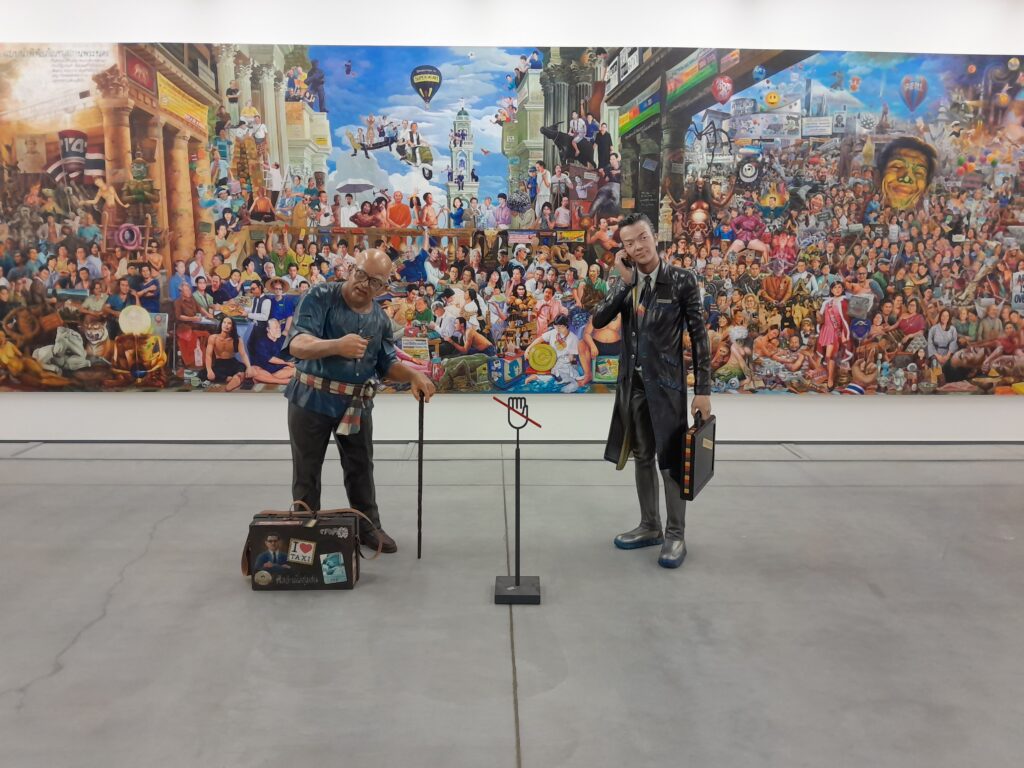
Another painting that reminded me of the raised fist used to represent black power. Perhaps it is related to the resistance against colonialism, or just a general protest against oppression. Another image that drew me close was a striking collage of flames and burnt paper. I think I like art that has a heavy contrast between black and white as these were the pieces I was most drawn to.
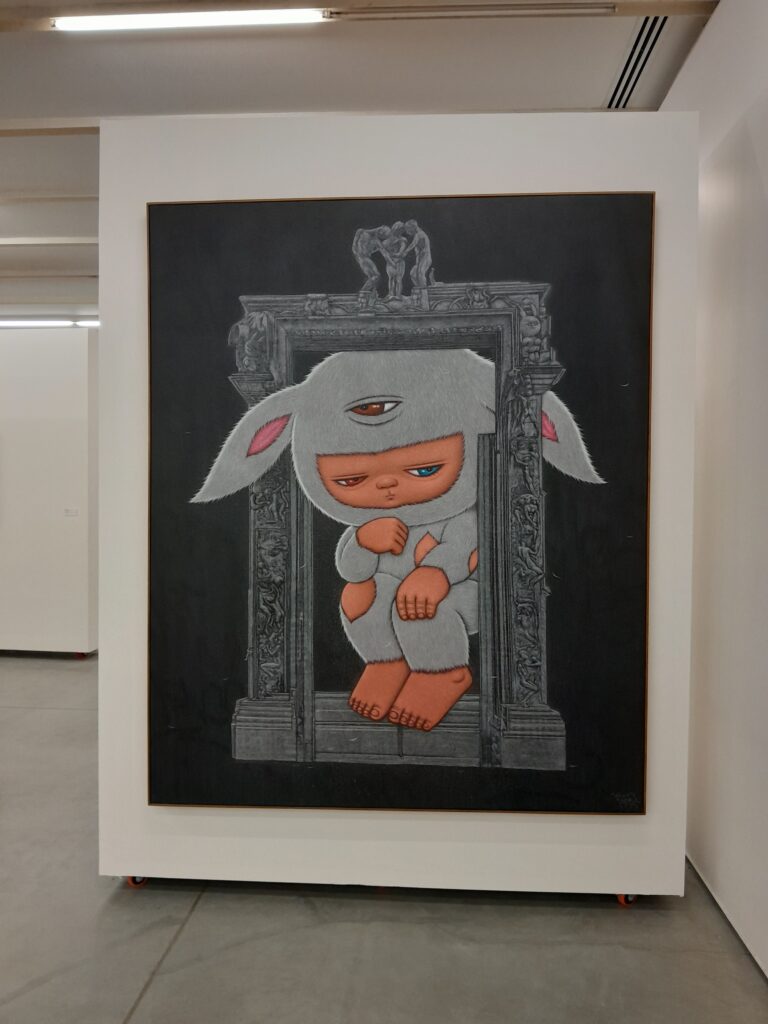
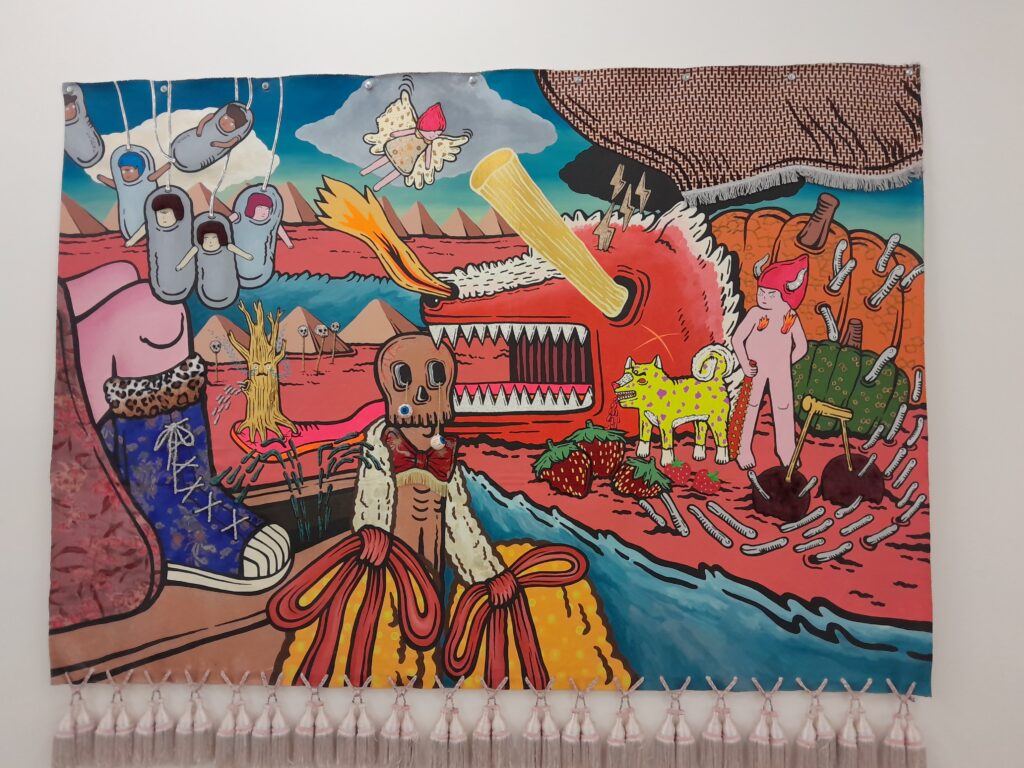
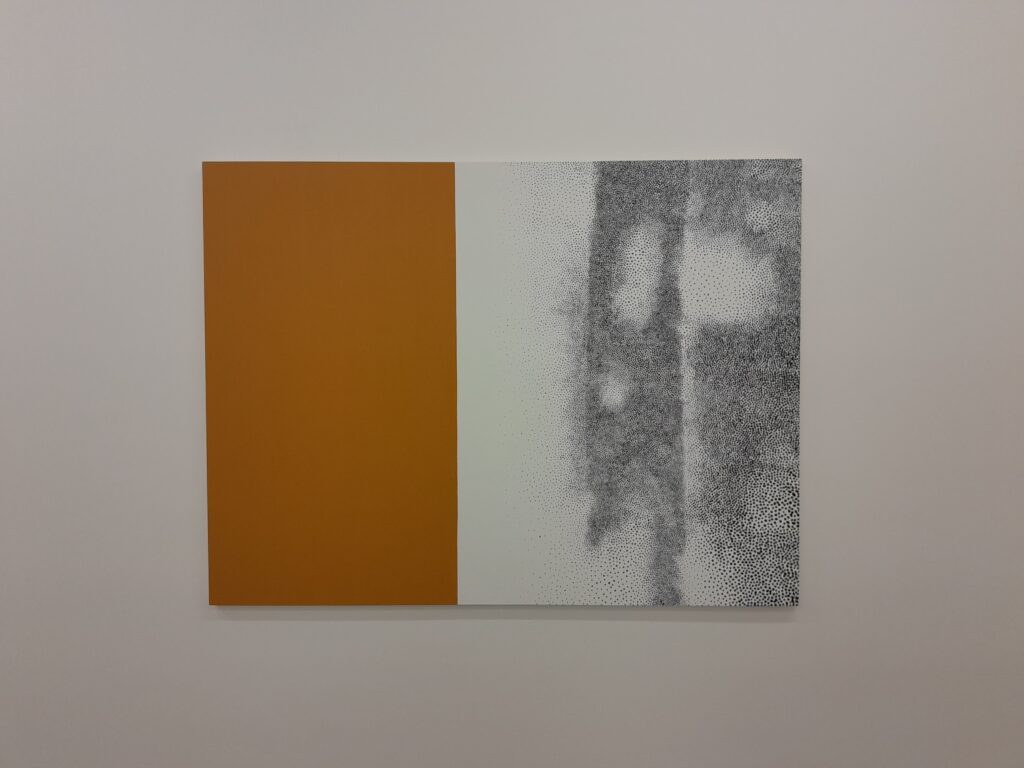
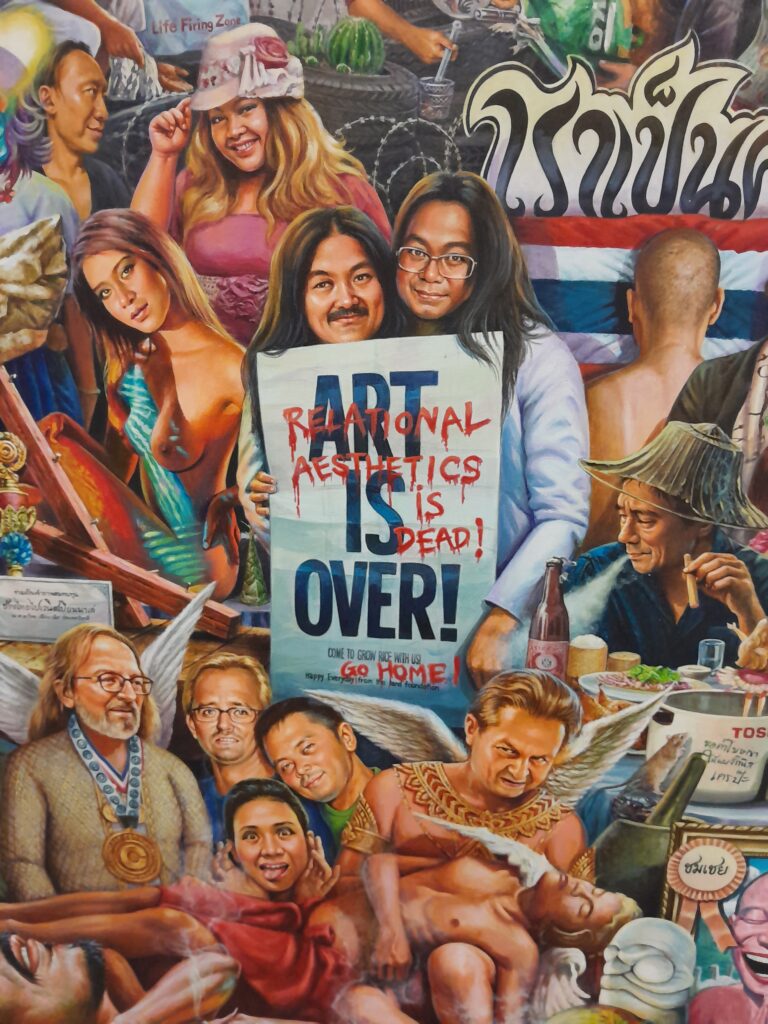
The back wall of this gallery was filled by Super(M)art Bangkok Survivor, a mural painted by Navin Rawanchaikul. It is filled with bright, colourful paintings of Thai art figures and commentaries on the commercialisation of art. In front there is a statue of the artist as if he was an old man.
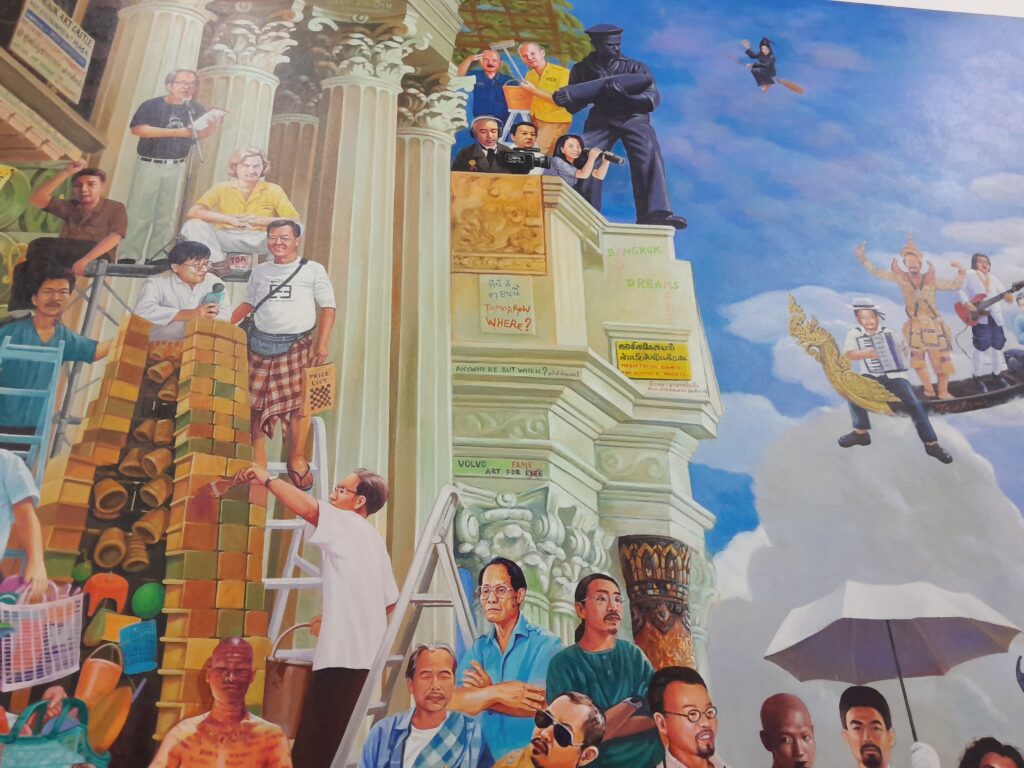
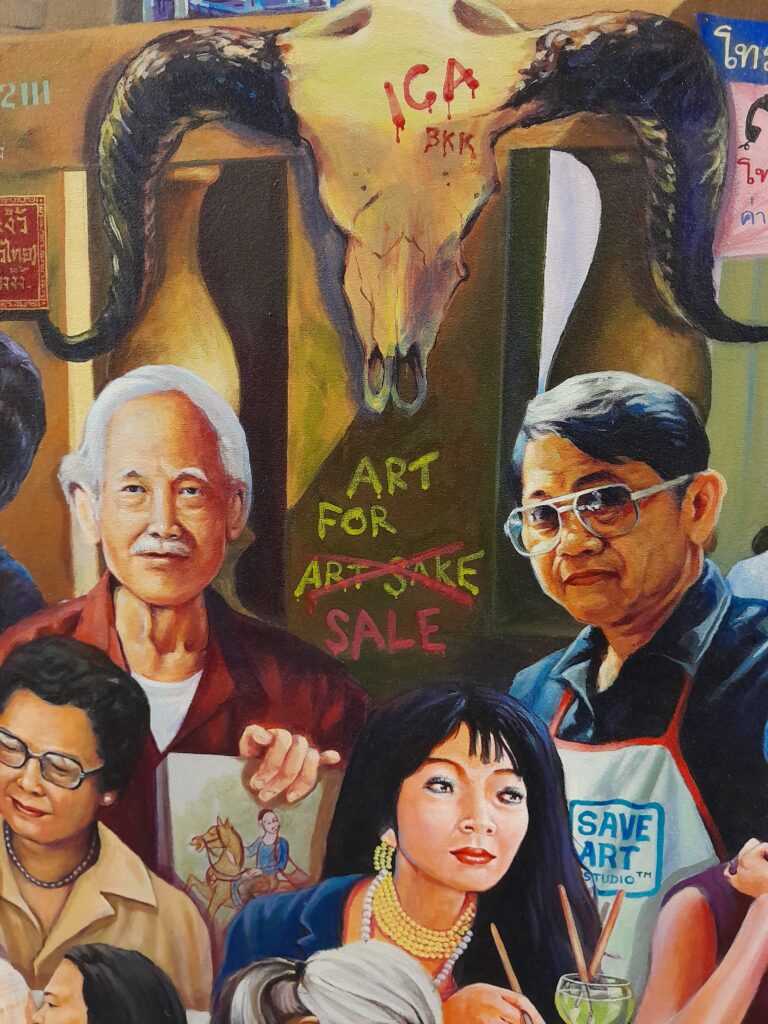
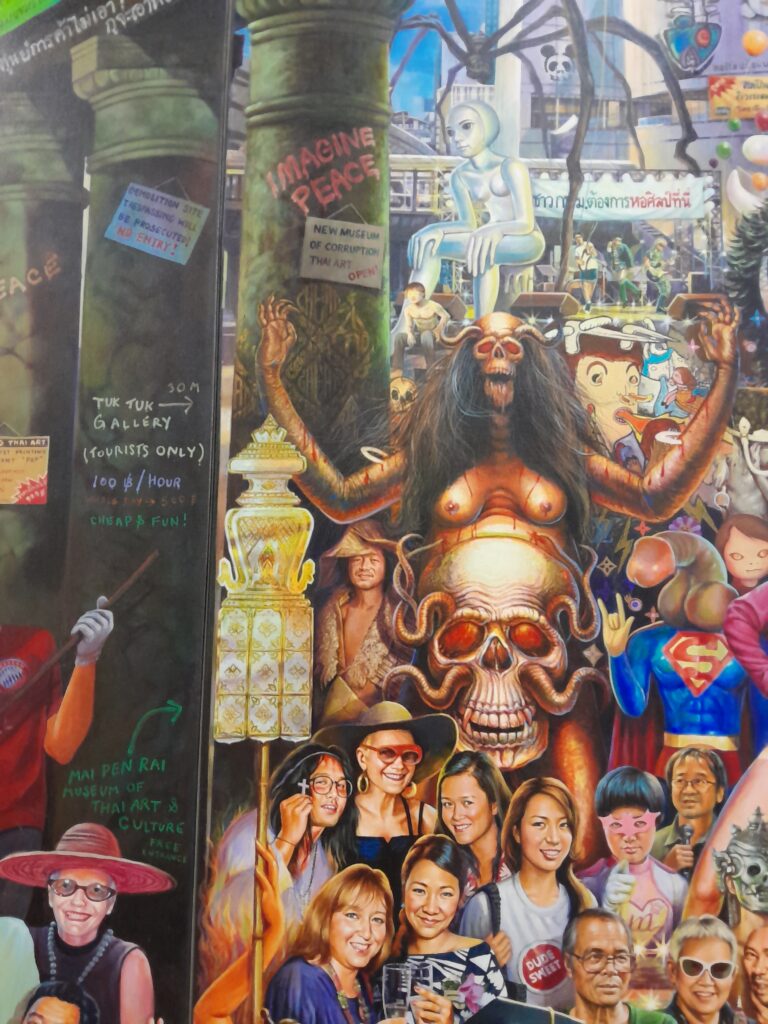
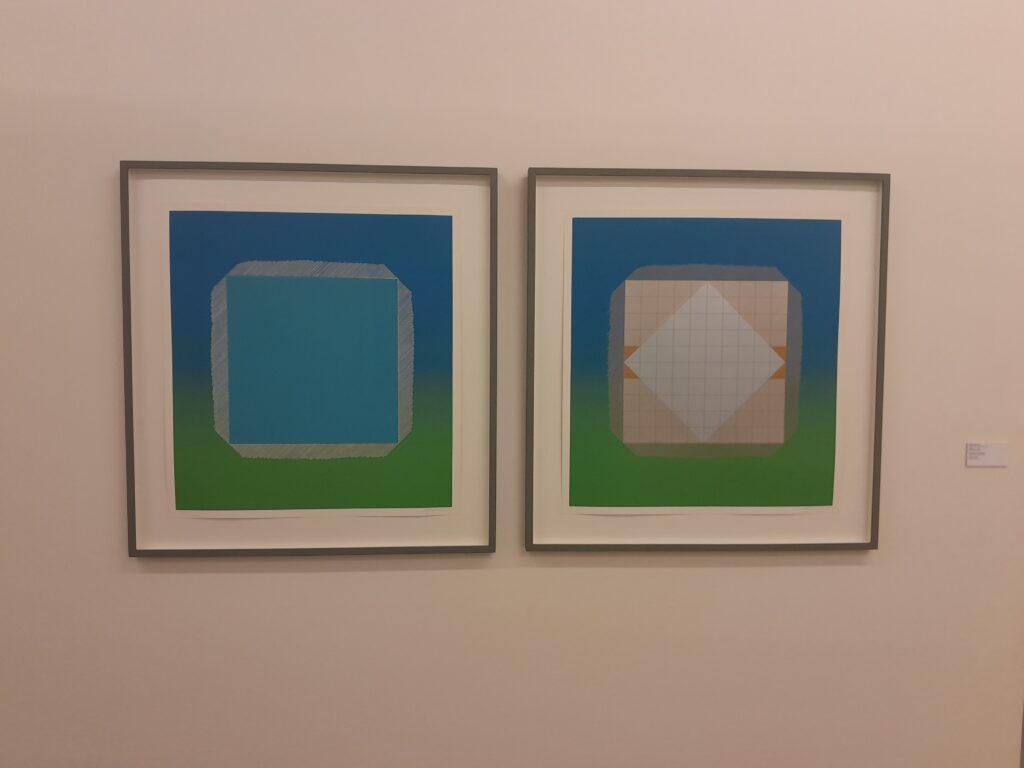
In this hall I recognised one painting’s style, the same graffiti of MUEBON, an artist that was very prominent in the Dream Space Gallery. This one was more of a traditional painting using one of their characters, allowing for more detail in the stupa that he had placed the character within.
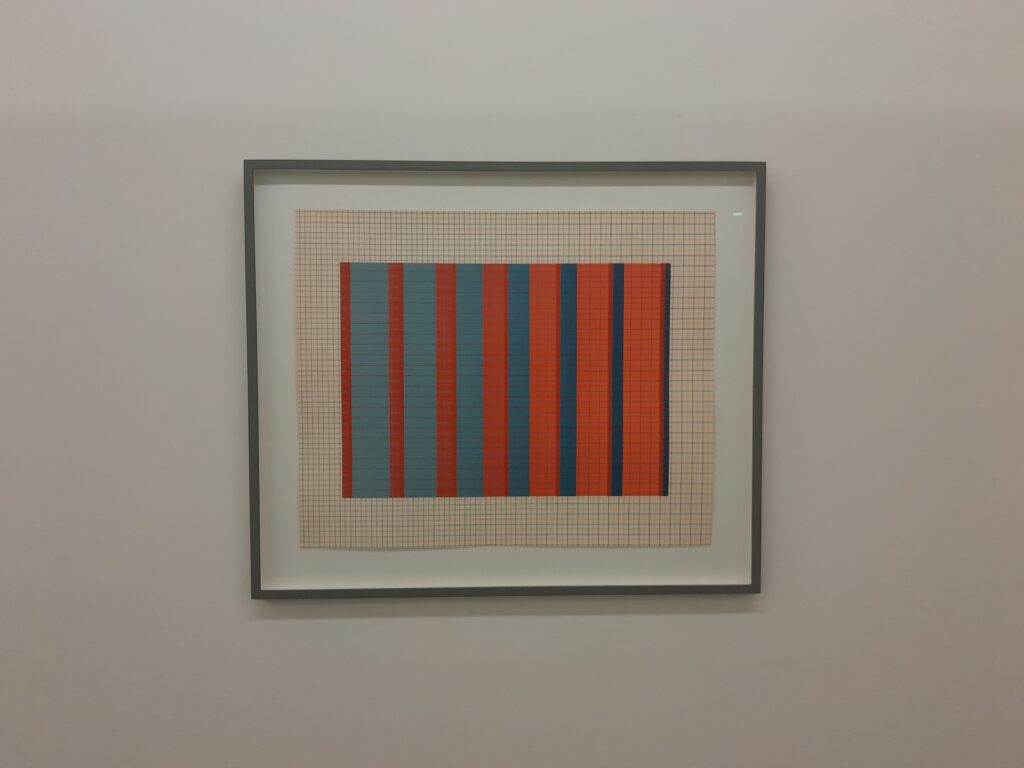
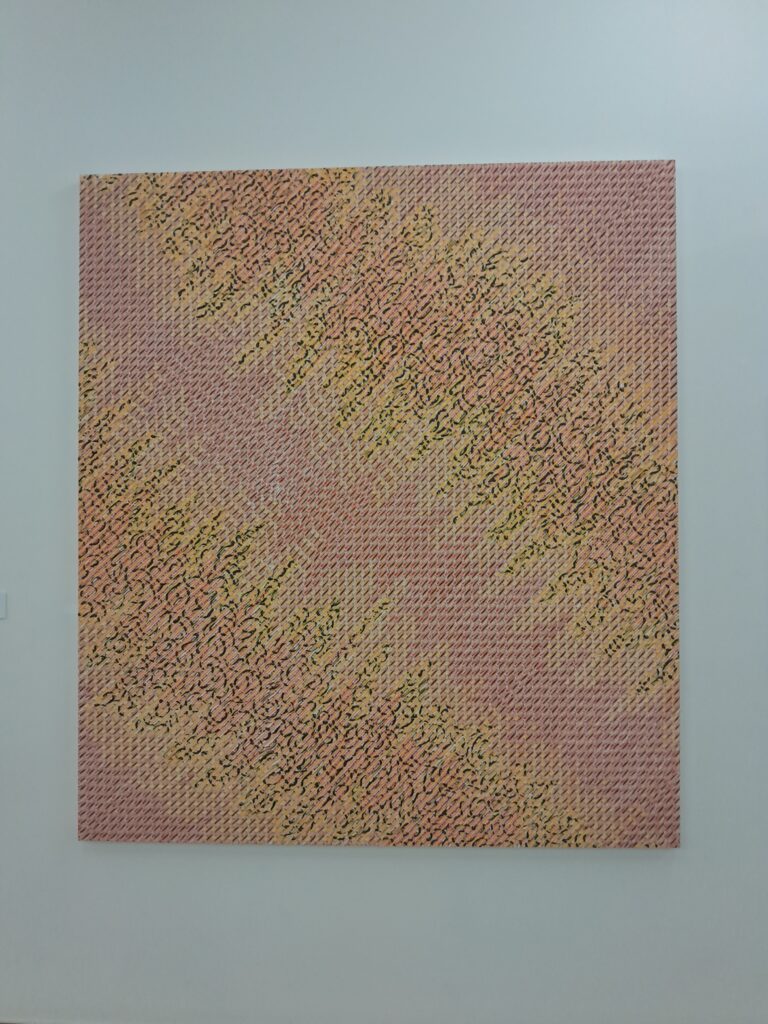
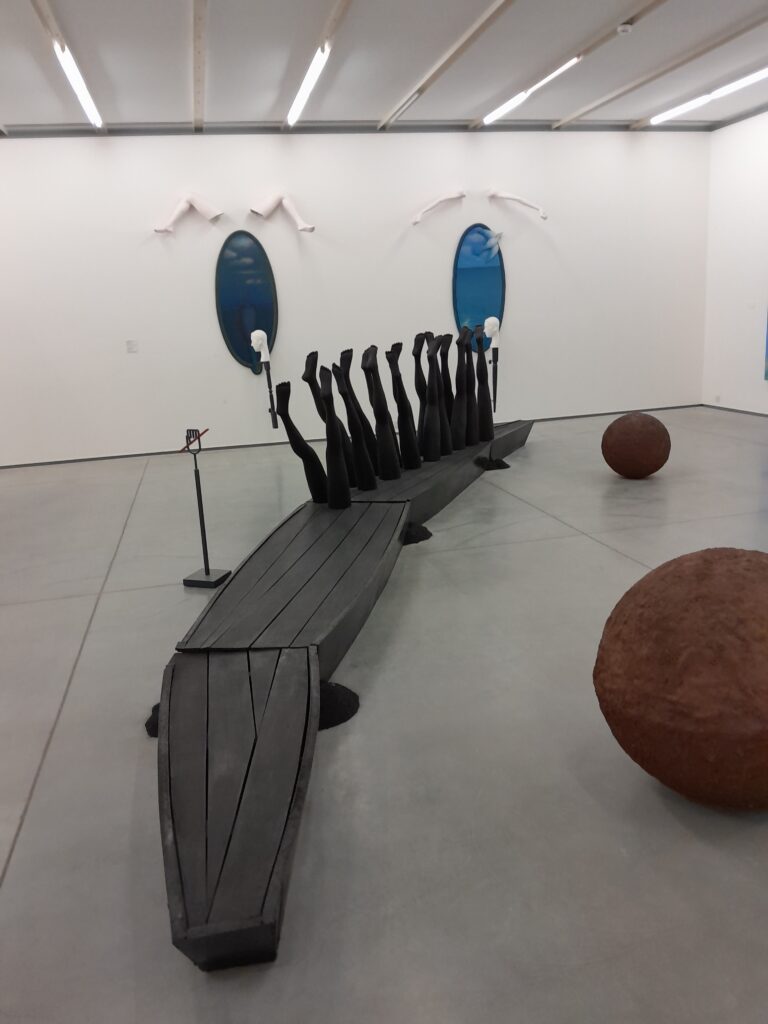
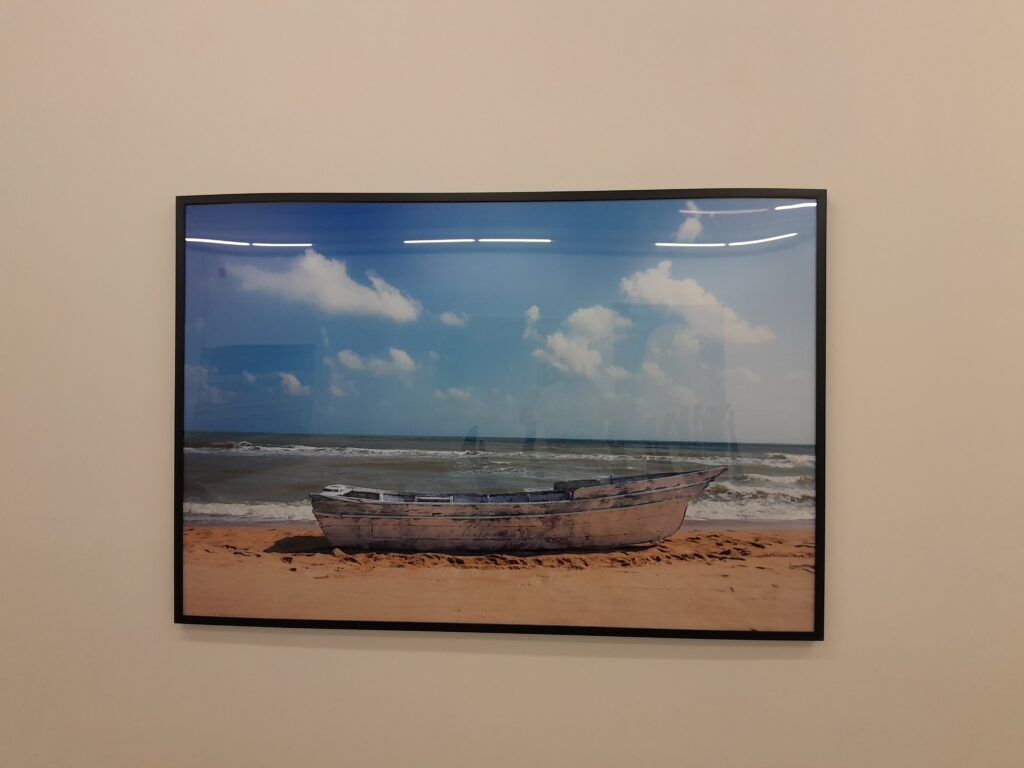
The final exhibit I walked through were a collection of photographs that were created as a protest against the enforced hijab in many countries. They were black and white pictures of women in hijab, against a black background. The effect being that only a small part of the pictures had any detail: their exposed eyes and hands, sometimes an arm. Their partial visibility emphasizes both their presence and their enforced silence.
Review
Walking through this gallery you can tell it is a labour of love. The owners are heavily involved in the art community globally, and just want to share their love of art. There is a cover on entry, but I would be surprised if most of the profit didn’t go back into the art museum itself. The MAIIAM is an easy to miss part of Chiang Mai, being on the outskirts of the city.
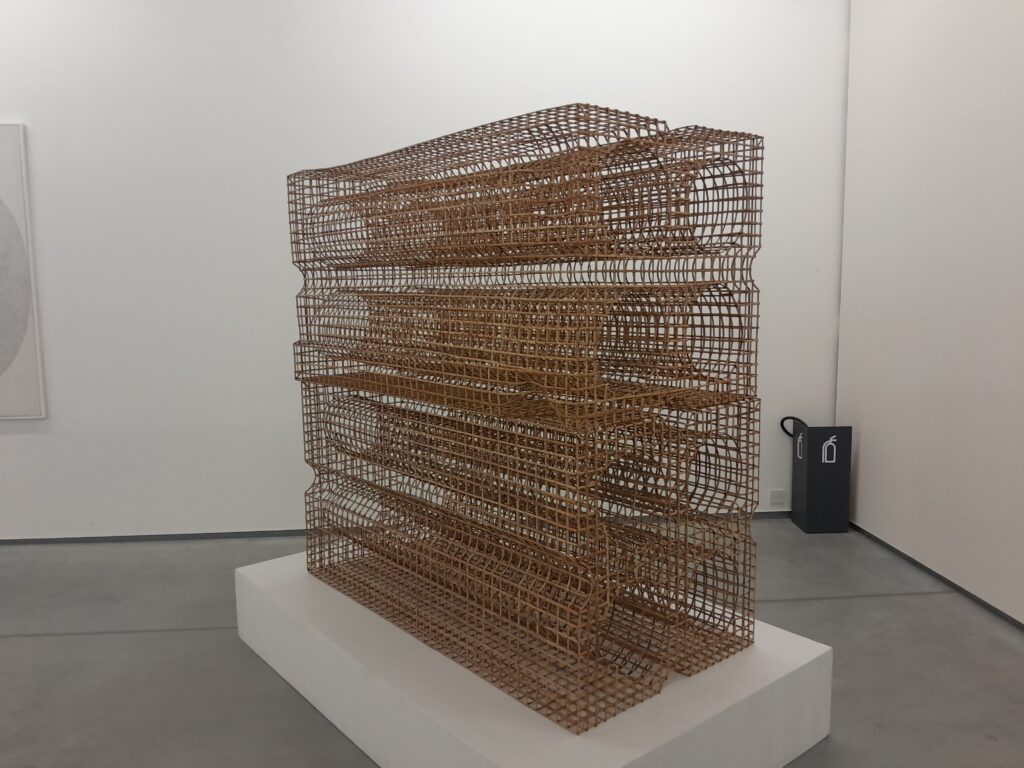
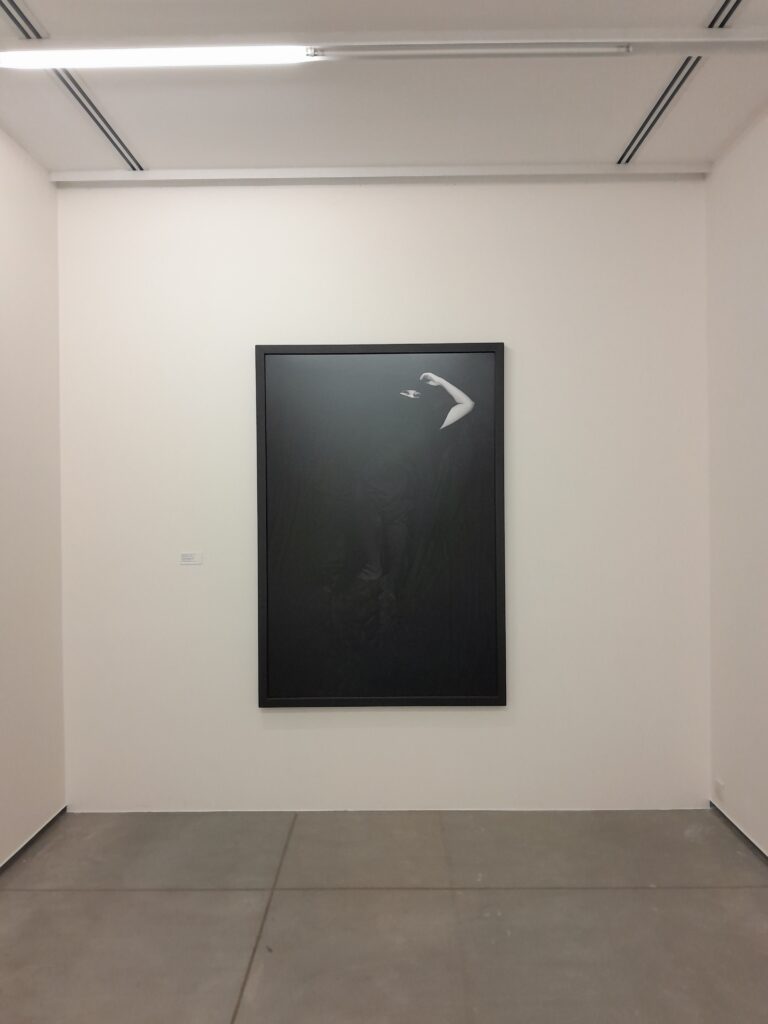
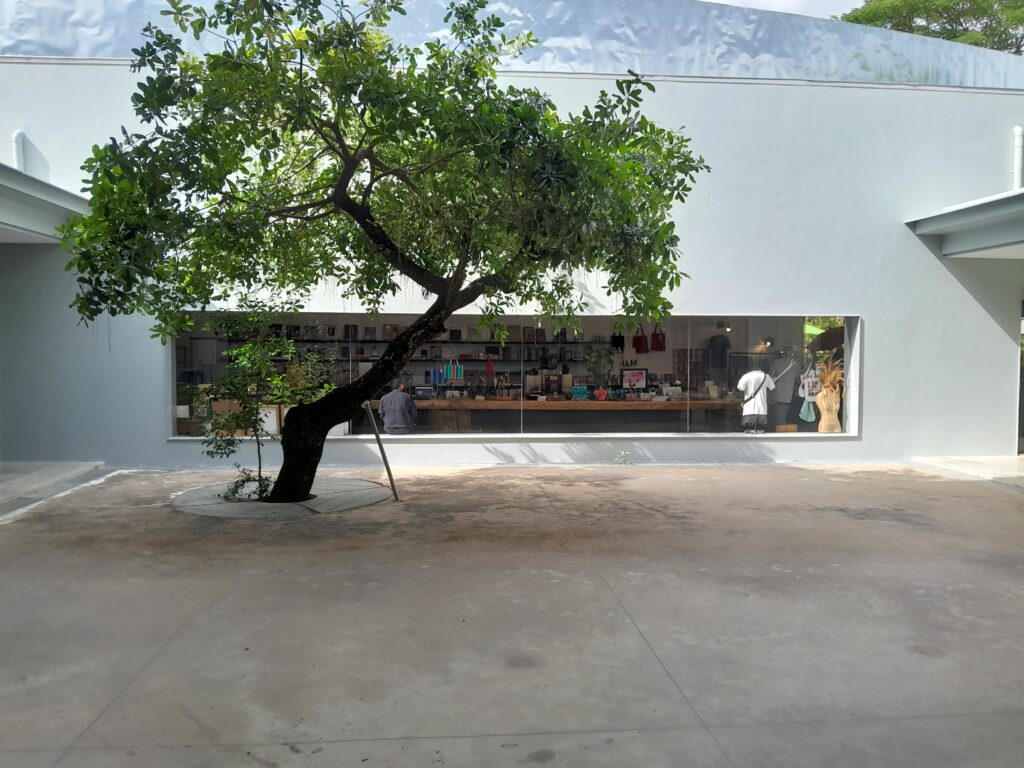
MAIIAM’s focus on contemporary Asian art not only allows the visitor to discover modern art from the region, but it also paints a picture of the political and cultural ideas that are important to the artists of today. Whether exploring marginalized cultures or abstract reflections, MAIIAM’s exhibits offer a powerful look into the political and cultural themes that drive today’s Asian artists. It’s a place that doesn’t just display art but also paints a vivid picture of the zeitgeist of modern Asia.




